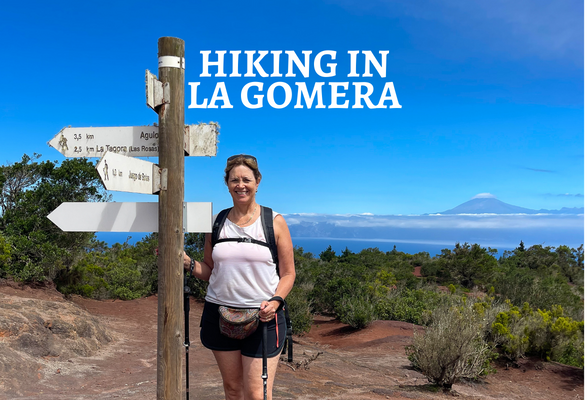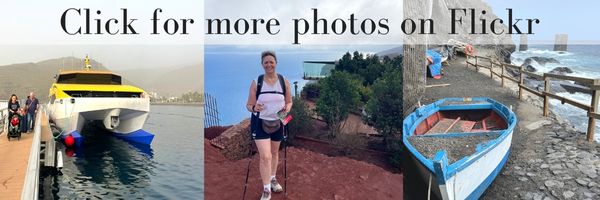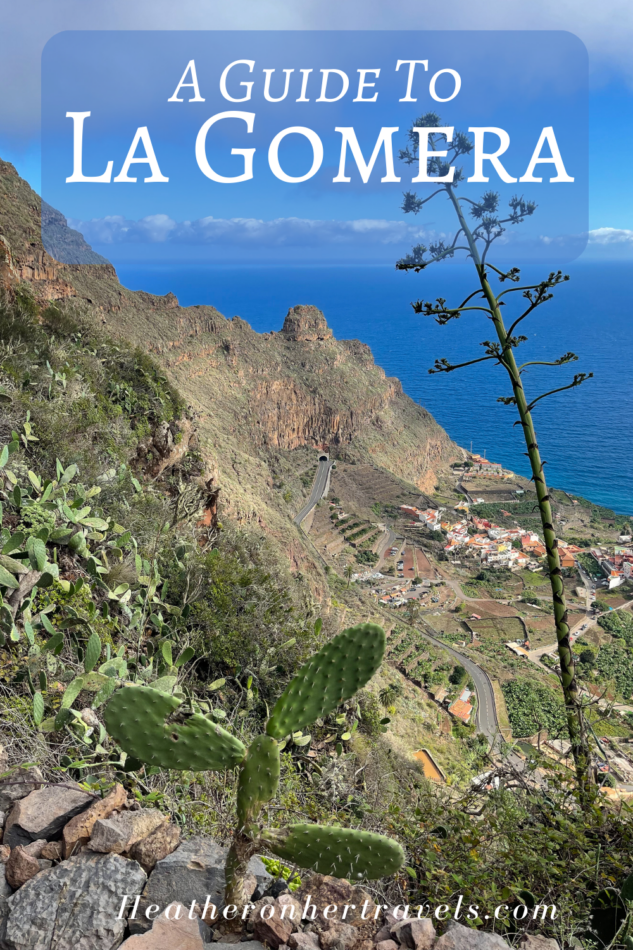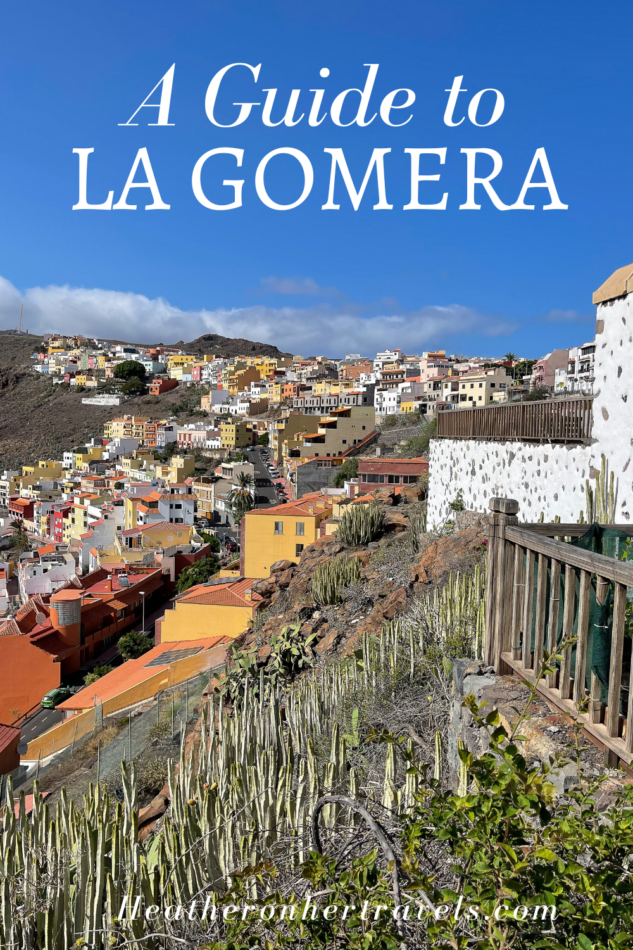La Gomera offers a wild and unspoiled atmosphere that is quite different from its busier neighbours in the Canary Islands. If you are looking for a quieter holiday in a rugged landscape surrounded by nature then read our La Gomera travel guide to help plan your trip.
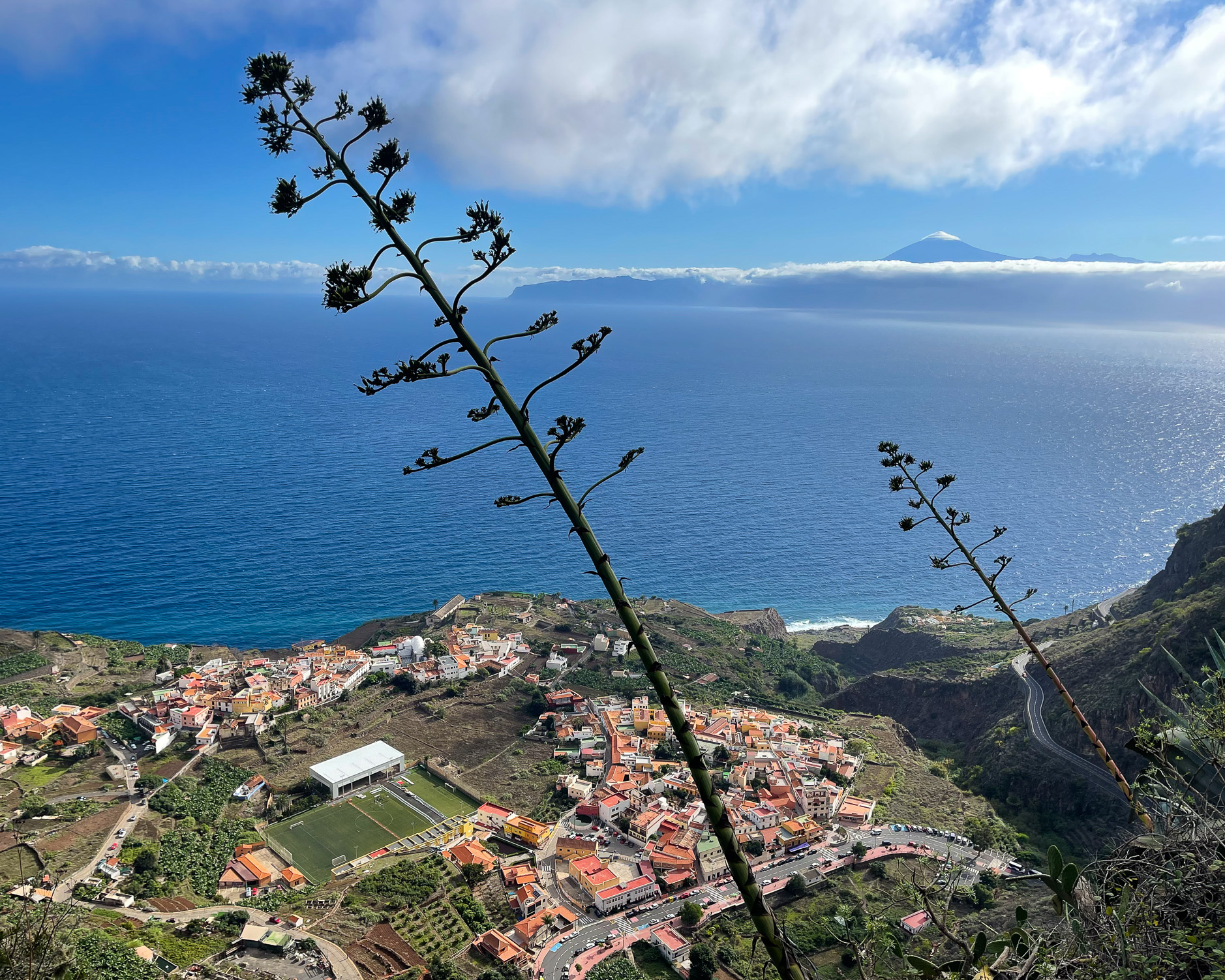
Above all La Gomera is a fantastic location for hiking through ravines that offer lush vegetation and amazing views. Even in winter, La Gomera offers warm temperatures and sunny days that make it the perfect escape for hiking and outdoor activities.
This article may contain affiliate links that provide commission on purchases you make at no extra cost to you. As an Amazon Associate I earn from qualifying purchases.
Where is La Gomera?
La Gomera is the second smallest of the Canary Islands archipelago that includes Tenerife, Lanzarote and Gran Canaria. While politically the islands are an autonomous province of Spain, they are located in the Atlantic Ocean off the coast of Africa. La Gomera is one of the most westerly of the island group, and easily reached in a 30 minute ferry ride from the neighbouring island of Tenerife.
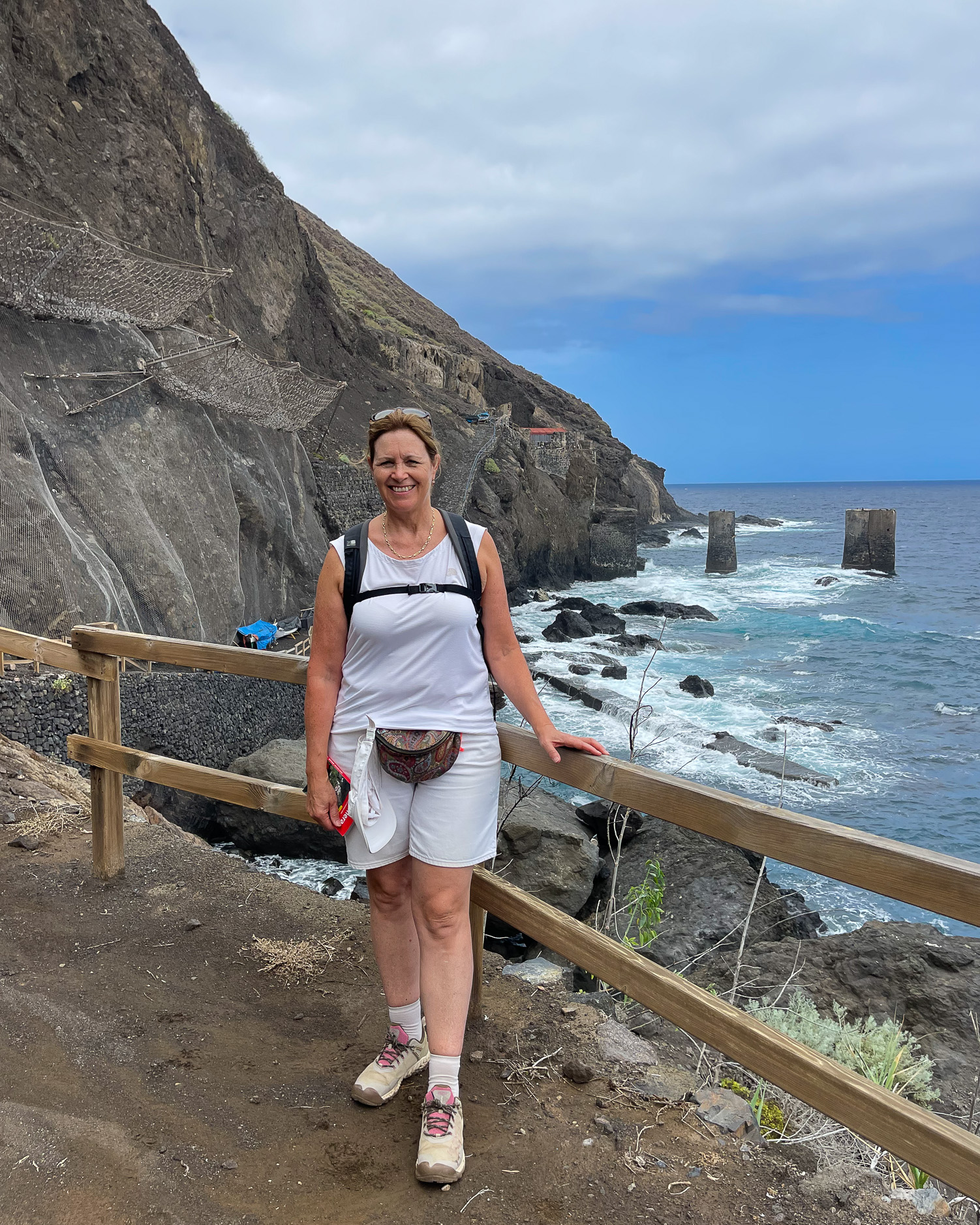
Landscape of La Gomera
This small and roughly circular island covers 370 m2 of rugged terrain. From a central highlands with protected laurel forest within the Garonjay National Park, steep gorges run down towards the sea. These barrancos or ravines are often steep sided, with cultivated terraces and palm groves interspersed by small hamlets.
The main towns and villages are on the coast or in the more protected valleys where there is some flatter land. Much of the coast is marked by steep cliffs with small pebble coves, where the sea is often too rough for swimming. The exception is on the more protected south coast of La Gomera, where dark sand and pebble beaches are to be found.
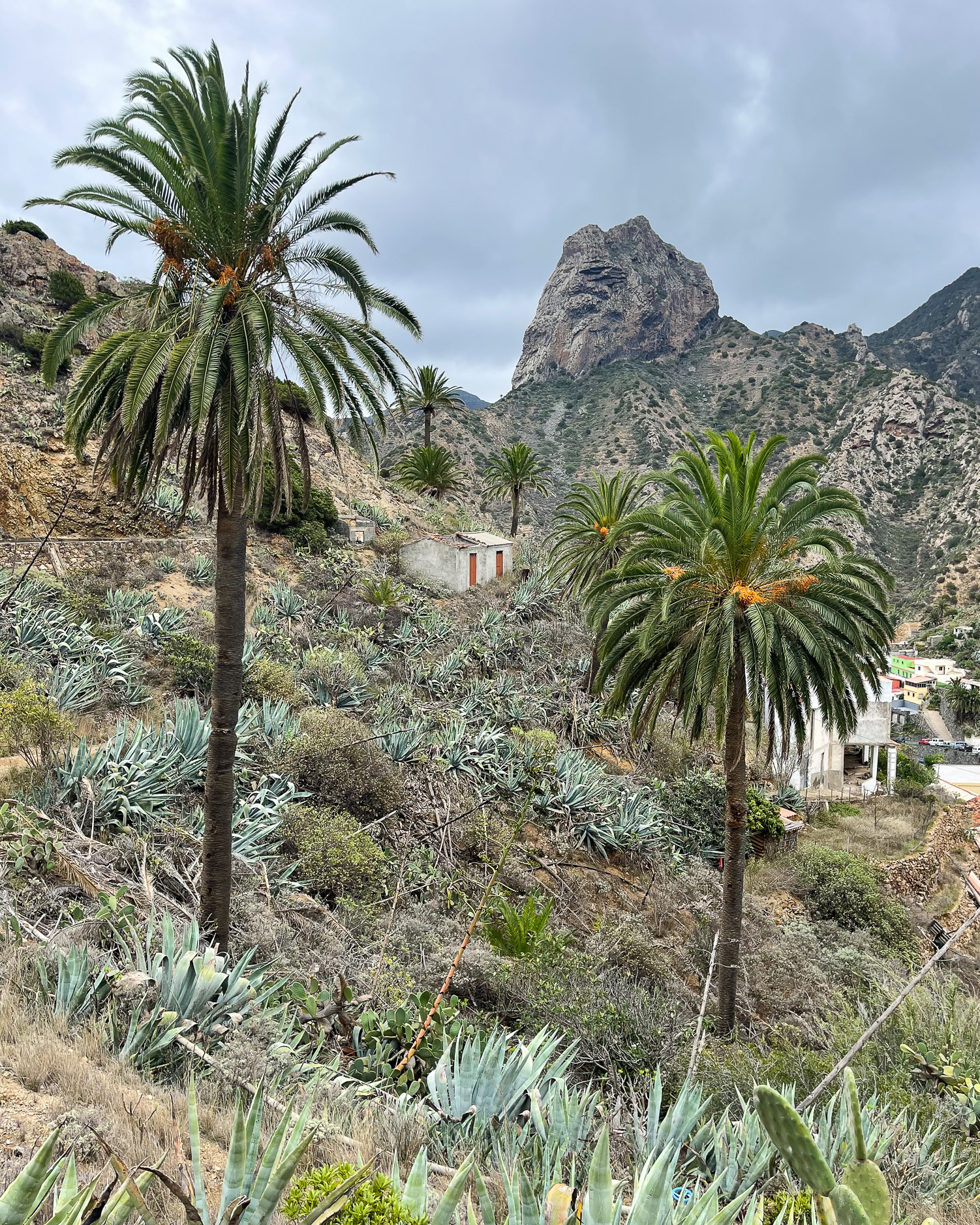
Things to do in La Gomera
La Gomera island offers numerous hiking trails, many of them based on ancient routes that connect villages across the island’s steep terrain. There are hundreds of coastal and mountain walks for hikers of all abilities. They are especially attractive for walking in La Gomera during the winter months, when the days are warm and sunny. For more information, read my article Hiking in La Gomera – a 7 day itinerary
Another of the most popular things to do in la Gomera is a visit to Garajonay National Park, which has two visitor centres and many marked walking trails. The visitor centres offer fascinating insights into La Gomera culture. Learn about the Silbo La Gomera whistling language that was used to communicate across valleys, the “shepherd’s leap” using a long pole to traverse steep slopes and the traditional La Gomeran pottery that is still made in El Cercado.
The island is proud of its connections with Christopher Columbus. In 1492 the explorer stopped in San Sebastian to stock up with supplies, before crossing the Atlantic to discover the “New World”. In the island’s capital is more information in the museums and the church where he visited to offer prayers for a safe crossing.
The best beaches in La Gomera’s are to be found in the south of the island, especially in the popular resort of Valle Gran Rey. Due to the island’s volcanic rocks, the beaches are of dark sand and pebble. While not rivalling the beaches of other Canary islands, they can be pleasant places to swim and relax.
If you’d like to visit La Gomera for the day from Tenerife, we recommend booking this La Gomera island tour from Tenerife. The ferry crossing from Tenerife is included and you’ll visit some of the main sites of La Gomera in one day.
For more information about the best hiking routes in la Gomera and the 7 day itinerary that we followed, check out my article Hiking in La Gomera – a 7 day itinerary
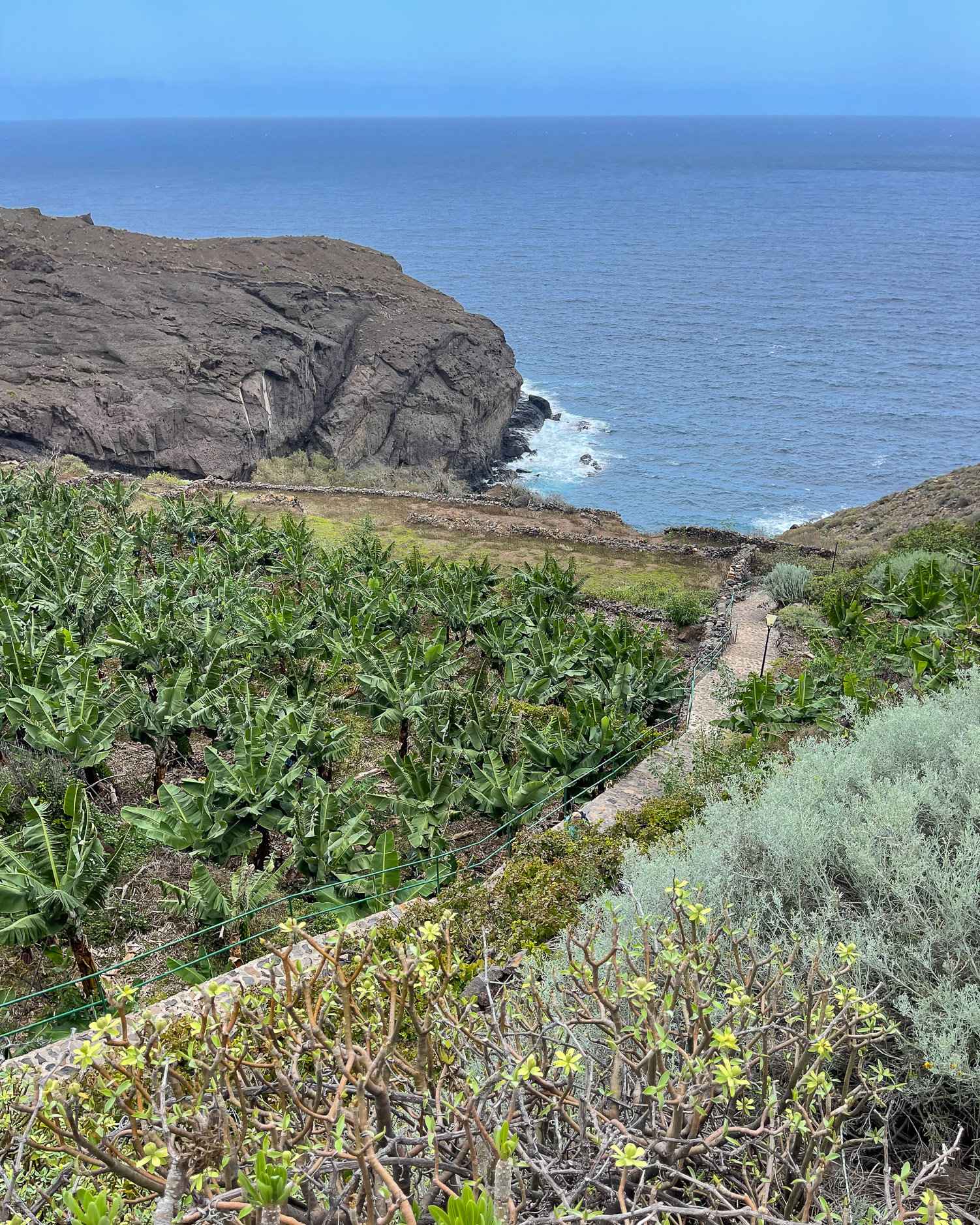
Hiking in la Gomera
La Gomera is the ideal winter hiking destination, with marked trails all over the island. Pick up a map of the hiking trails in La Gomera at any tourist information office.
However these do not give much detail about the walking routes or how to find their starting points. So for serious hikers, we highly recommend the walking guidebook – La Gomera, the finest coastal and mountain walks.
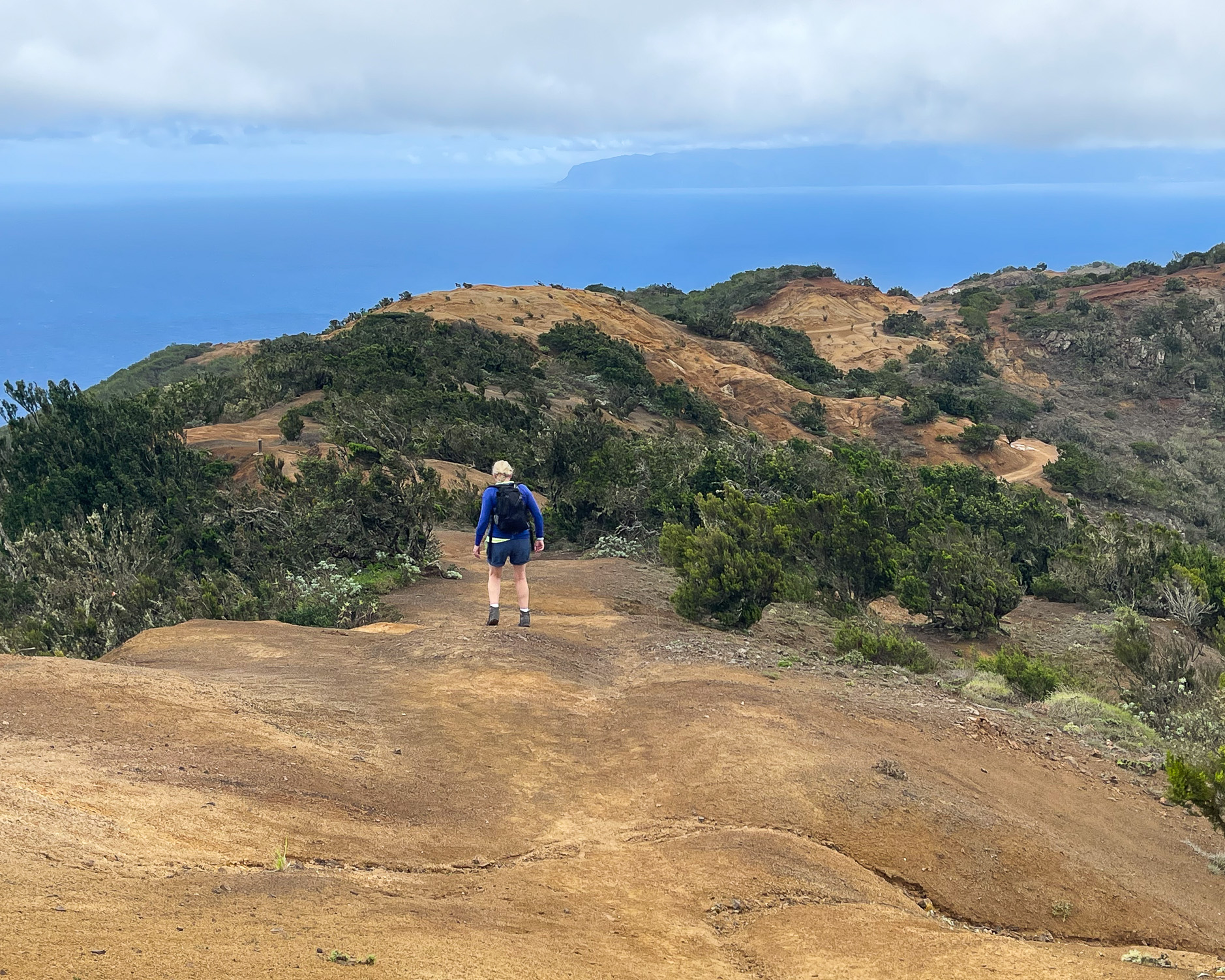
We recommend this guide, which we used for walking in la Gomera because:
- It offers 70 different walks in la Gomera, and tells you which can be joined together to make longer walks.
- The walks are well indexed by starting point and difficulty, and there’s a list of the 14 best walks in la Gomera.
- There are clear instructions, maps and photos for each walk.
- The book gives useful information on transport, flora and fauna, and the places you’ll pass through.
- If you are a German speaker, the guide is also available in German.
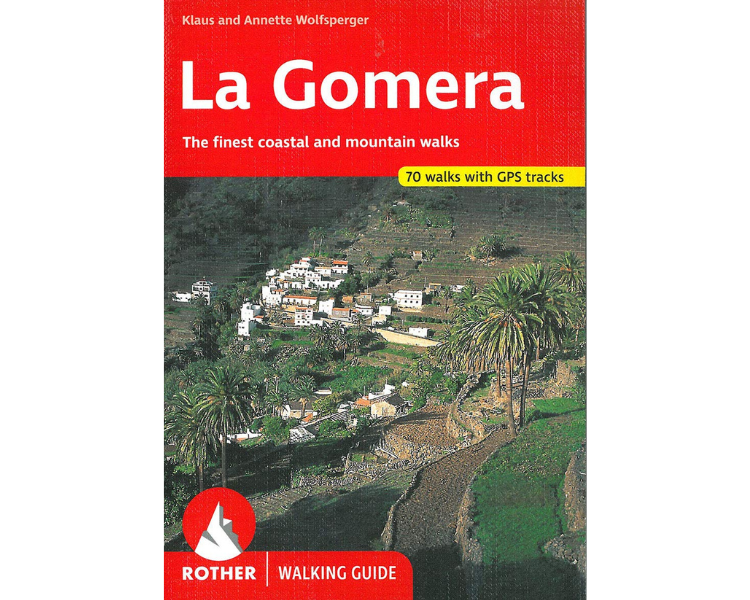
We used and recommend the La Gomera Rother walking guide
For more information about the best hiking routes in la Gomera and the 7 day itinerary that we followed, check out my article Hiking in La Gomera – a 7 day itinerary
Main places to visit in la Gomera
At only 370 km2, La Gomera is not a big island, although the rugged terrain means that travel by road may take longer than you’d expect. The main towns, villages and places to see in la Gomera include:
San Sebastián de la Gomera – The island’s capital, where the ferry arrives. It’s one of the oldest settlements, with connections to Christopher Columbus, a couple of interesting museums as well as a shady central square and pebble beach.
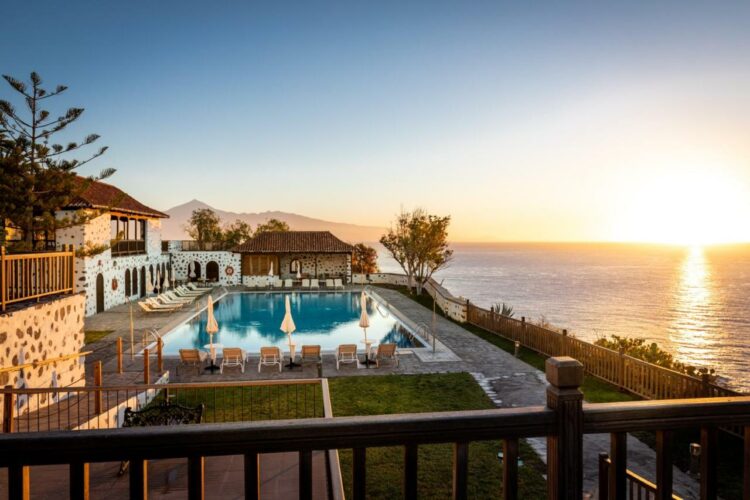
Stay at the Parador de La Gomera in San Sebastián de La Gomera
Search for other San Sebastián de La Gomera hotels
Agulo and Hermigua – mountain villages on the north east side of La Gomera. Hermigua La Gomera is strung along a steep valley, while Agulo is built on a small plateau of land backed by a precipitous cliff. Both offering excellent hiking opportunities.
Vallehermoso – literally the Beautiful Valley, a small working town in the north of the island at the confluence of several valleys, making it an excellent base for hiking.
Parque National de Garajonay – The National Park that covers the centre of the island is known for its unique and ancient Laurel forests. At the centre of the park is the visitor centre at Laguna Grande where many walking trails start. The Juego de Bolas visitor centre and museum is on the edge of the park near Agulo.
Valle Gran Rey – The most popular seaside holiday resort in the south west of the island, with several black sand beaches. This resort is especially popular with German holiday makers and has the largest concentration of hotels and holiday accommodation on la Gomera.
Playa de Santiago – Located on the south coast of the island, this beach resort with sheltered harbour is dominated by the luxurious Hotel Jardin Tecina and golf course, developed by the Fred Olsen family.
If you’d like to visit La Gomera for the day from Tenerife, we recommend booking this La Gomera island tour from Tenerife. The ferry crossing from Tenerife is included and you’ll visit some of the main sites of La Gomera in one day.
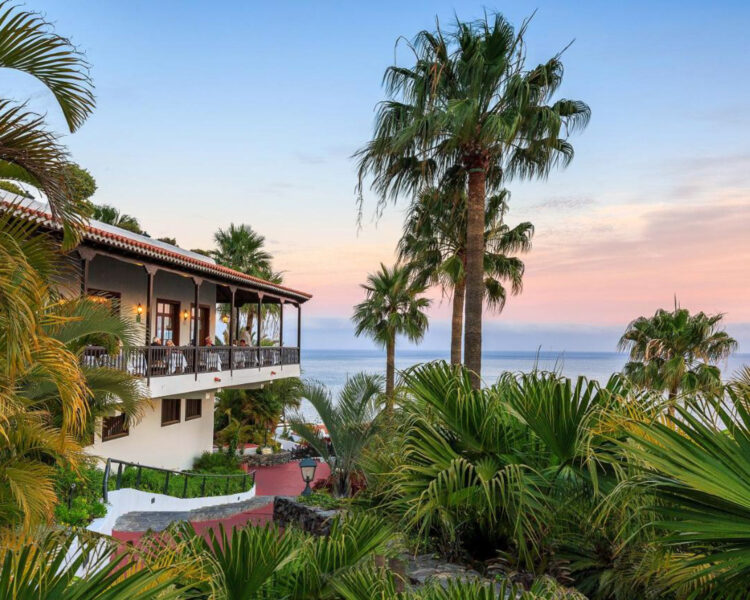
Stay at the luxurious Hotel Jardin Tecina in Playa de Santiago La Gomera
Search for other San Sebastián de La Gomera hotels
Things to do in San Sebastián de la Gomera
La Gomera’s capital has a largely pedestrianised centre, making it easy to wander around. The oldest houses survive from the 1440s when land was granted to Spanish nobles, after the conquerers managed to subdue the Guanche people who lived here. San Sebastian is very proud of its connections with Christopher Columbus who stopped here in 1492 to take on supplies for his voyage to the “New World’.
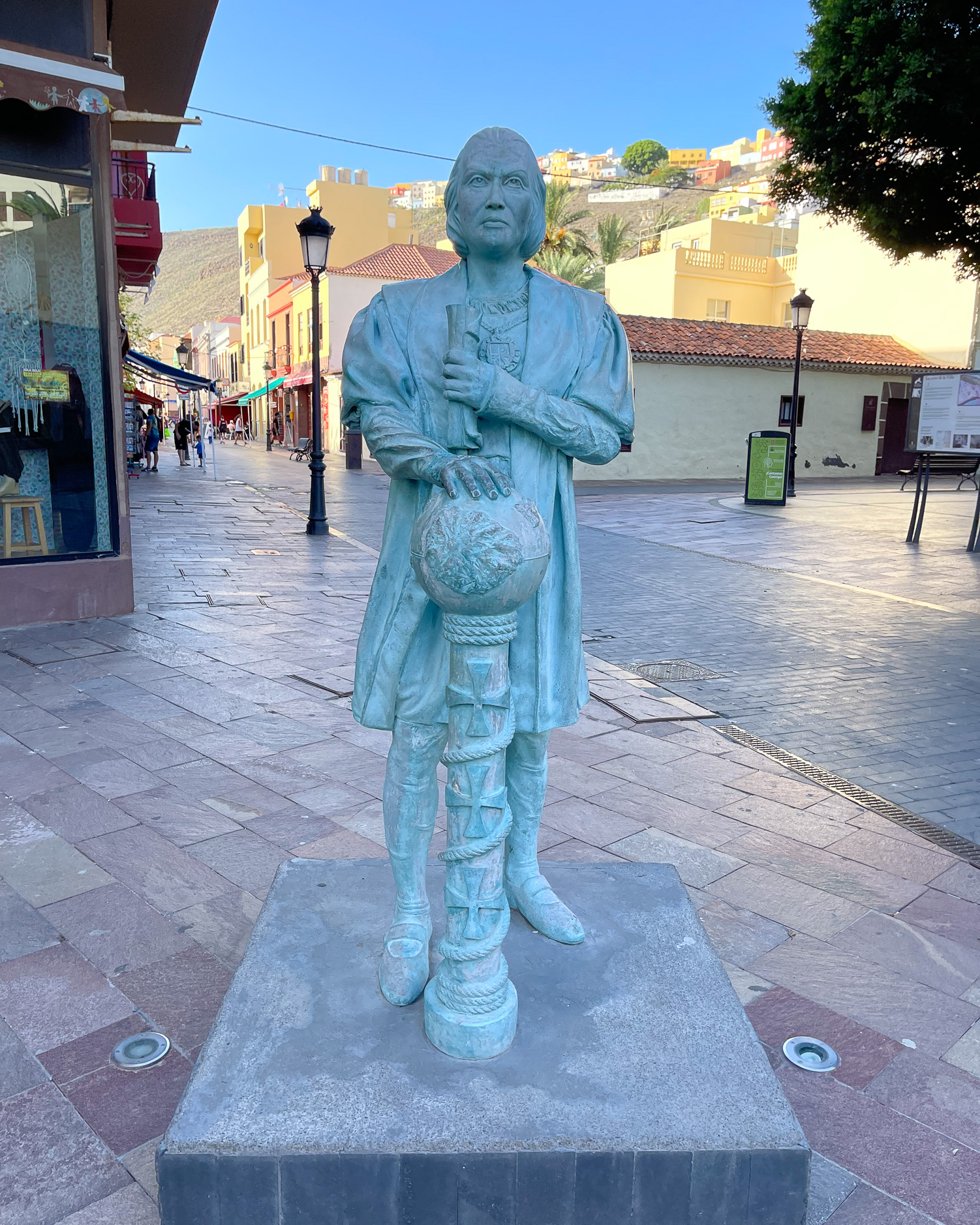
The main things to do include:
- Sit under the shady laurel trees in Plaza de la Constitution and watch the world go by from the cafe “Kiosco las Carabelas”
- Notice the statue in the plaza of Christopher Columbus and read the information boards about the town’s history.
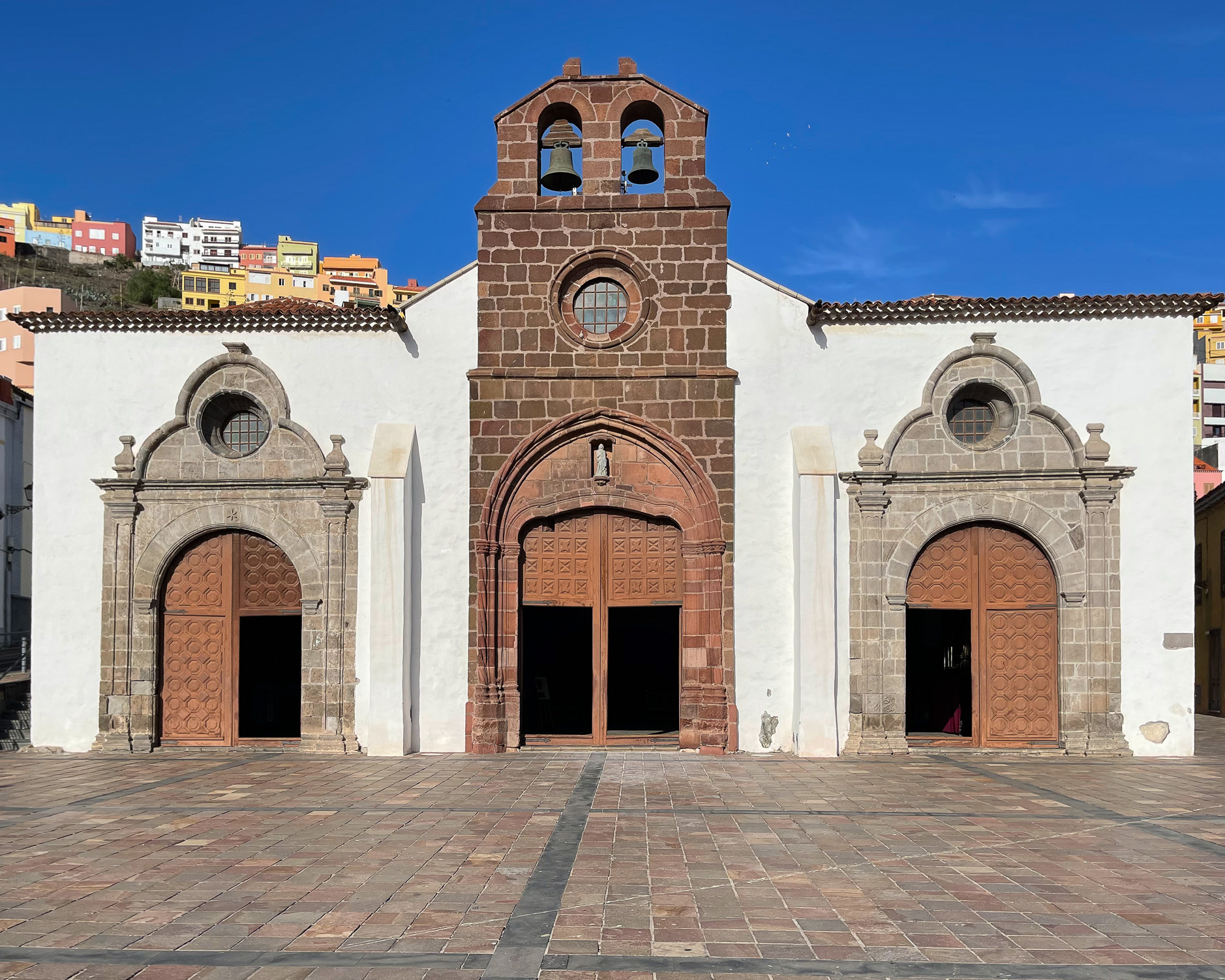
- Wander up Calle Real to the Inglesia de la Asuncion, the town’s main church. Successive damage by pirate attacks mean that the church you see today mostly dates from the 17th century.
- On the corner opposite the church is La Casa de la Aguada, with a well in the courtyard where Christopher Columbus traditionally drew water for his voyage. Today it’s a tourist information centre, with an interesting exhibition about the island and the importance of stone in its development.
If you are based in San Sebastian, this Hamlets of the north hiking tour provides a day’s guided hiking in the picturesque northern valleys around Agulo including transport.
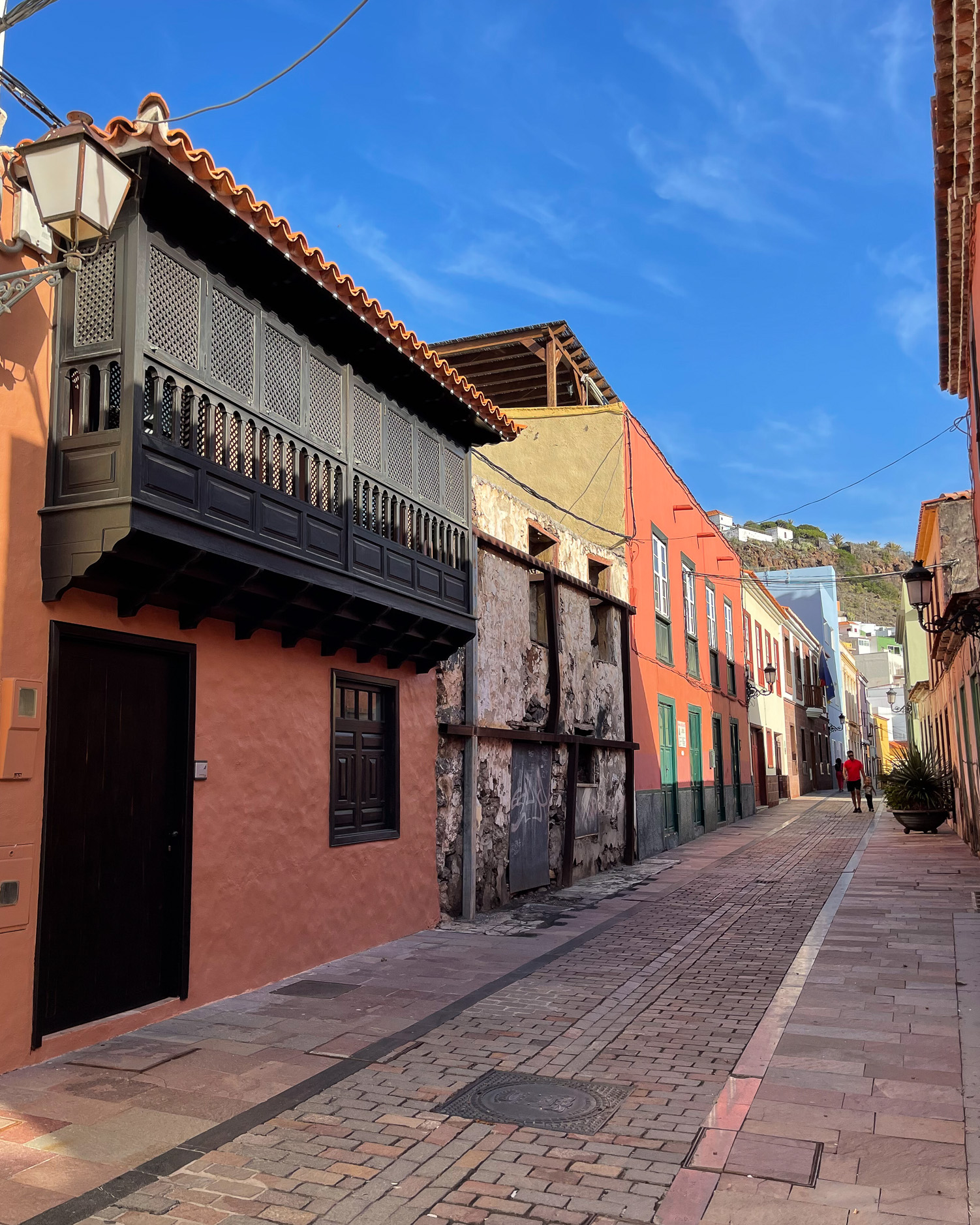
- Next door is the Archaeology museum with information about the island’s first inhabitants, the Guanches. On the same street and the nearby Calle Virgen de Guadalupe are some pretty old Canarian houses with the typical carved wooden doors, shutters and balconies.
- A short distance further along Calle Real is the small chapel Ermita de San Sebastian built in 1450.
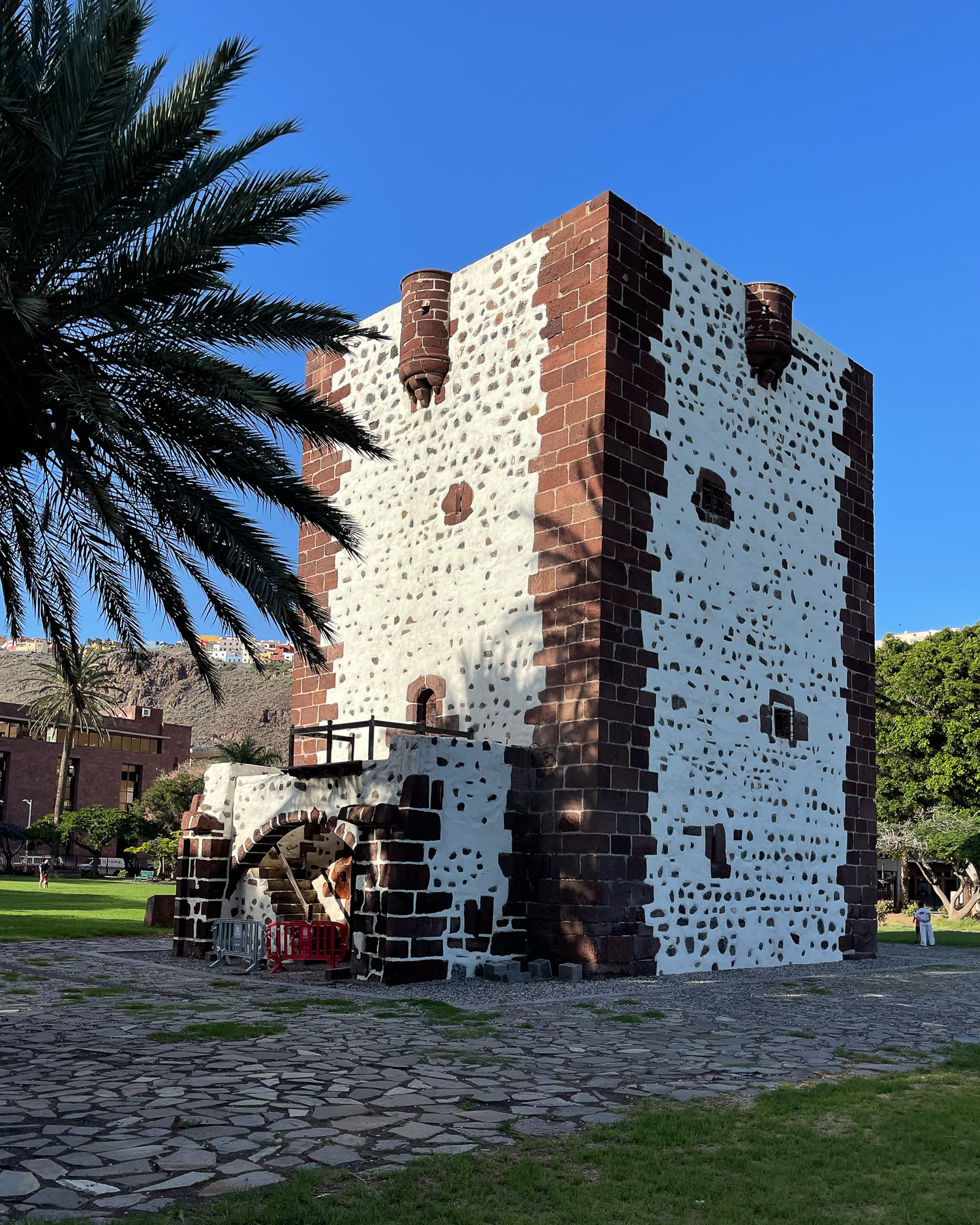
- One of the town’s main landmarks is Torre del Conde, a fortified tower set in an open park. It was built in 1447 to defend against the Guanche. The tower proved useful to Beatriz de Bobadilla, who sheltered there following the murder of her husband the governor, until help arrived to put down the Guanche rebellion.

Stay at the historic Parador de La Gomera in San Sebastián
Search for other San Sebastián de La Gomera hotels
Things to do in Agulo La Gomera
Places of interest to visit in Agulo include
- The church of San Marcos in the main square, with its striking rounded roof design. This church was rebuilt in 1911 on the site of an earlier church that had fallen into disrepair. During the festival of San Marcos in April, bonfires of juniper wood are lit in the square and young men jump over the flames in honour of the saint.
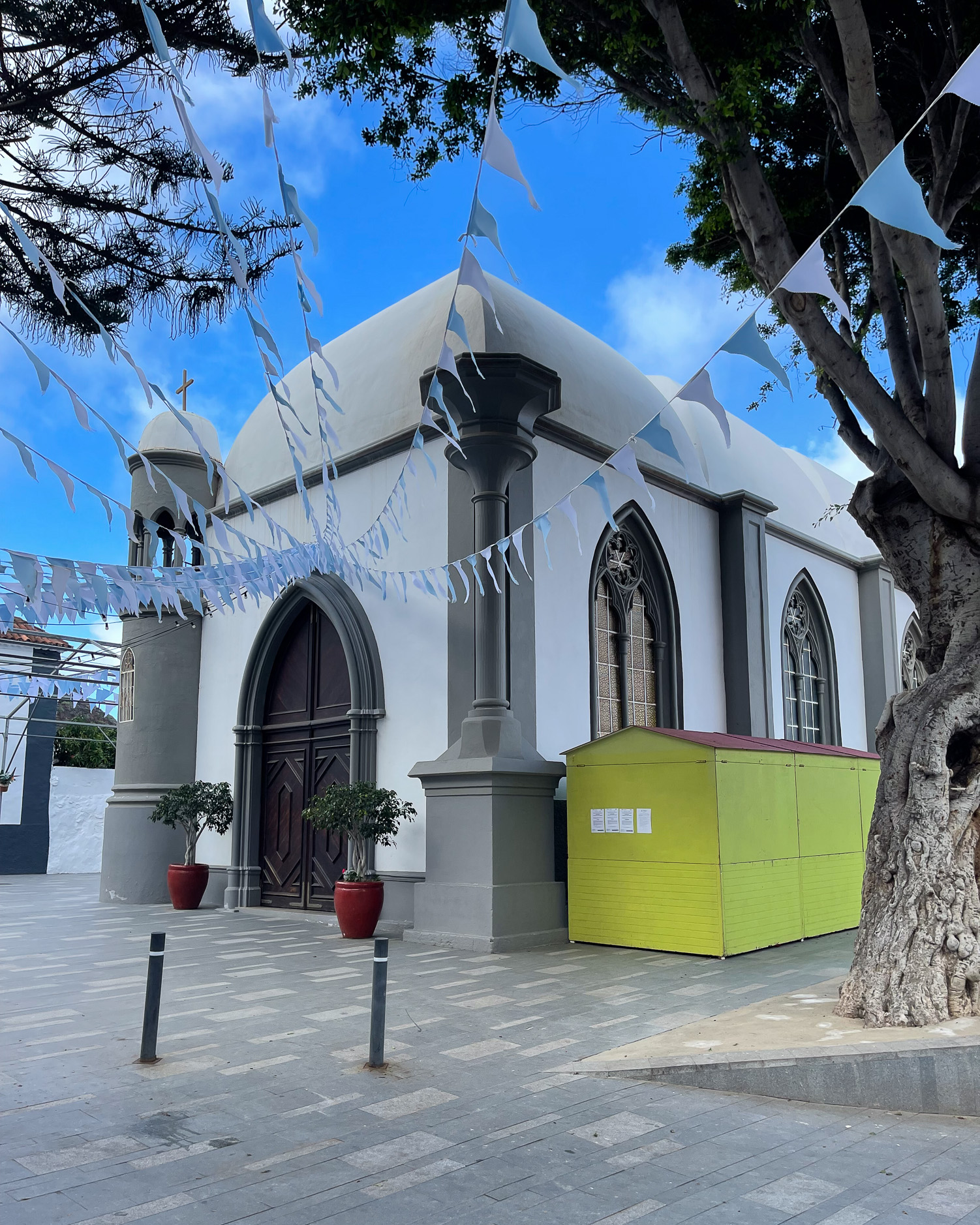
- The main thing to do in the village itself is to wander around the pretty streets to soak up the atmosphere, and relax in one of the town’s cafes or traditional restaurants. We ate in La Vieja Escuela and Bar Restaurante Alameda, both of which serve tasty Canarian specialties.
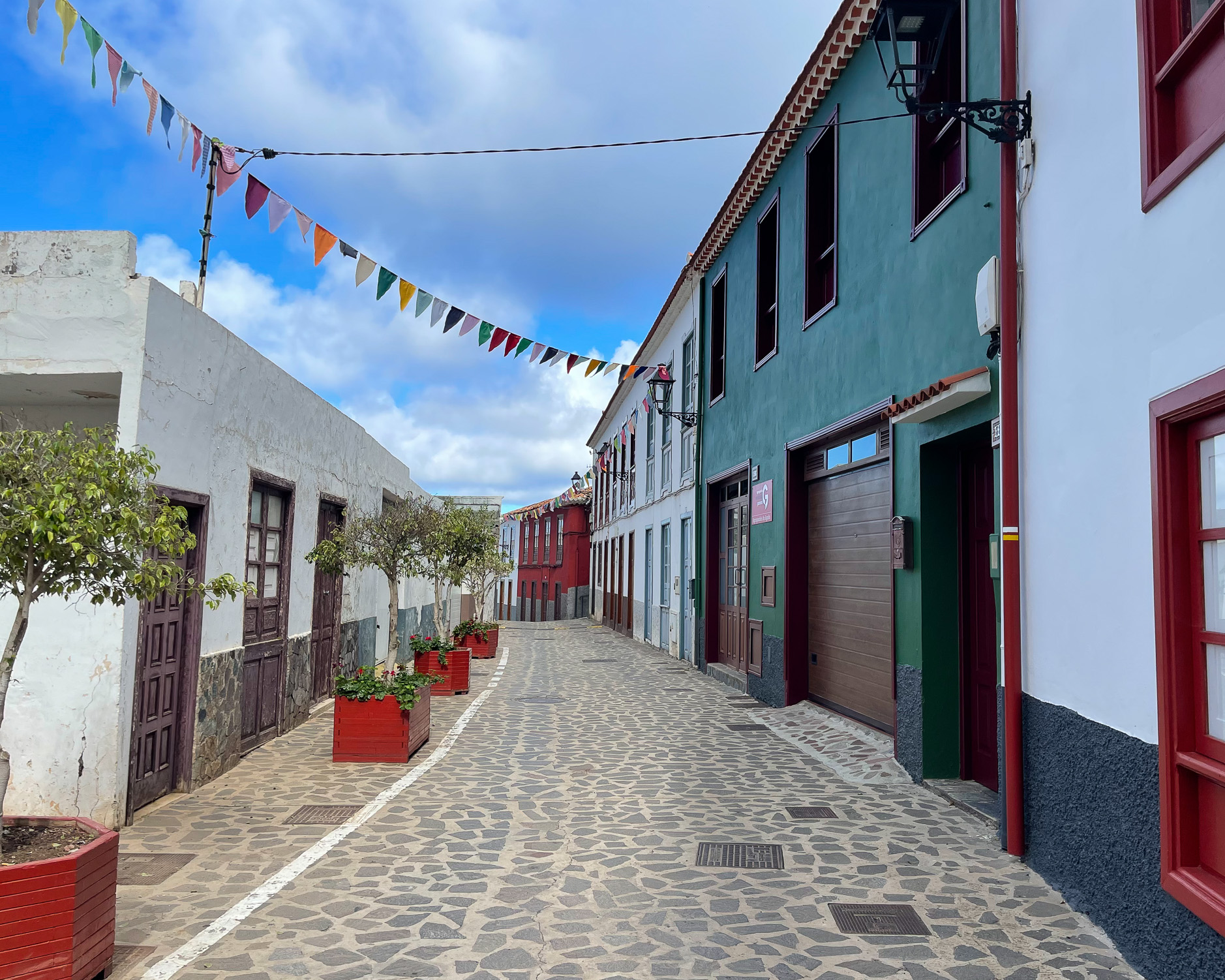
- From Agulo you can walk to the coast to see the remains of an old davit or crane that was used to load boats with bananas. It was destroyed by a storm in the 1950s.
- Also from the village you can walk to the beach at Playa de San Marco, where there is a pretty chapel. It’s a good picnic spot although the waves are too rough to swim here.
- If you want to get the most spectacular views you can hike or drive up to the Mirador Abrante viewpoint where there’s a glass viewing platform, for views over Agulo and Mount Teide in Tenerife.
- For those based in San Sebastian, this Hamlets of the north hiking tour provides a day’s guided hiking in the picturesque northern valleys around Agulo including transport.
For more information about the best hiking routes in la Gomera and the 7 day itinerary that we followed, check out my article Hiking in La Gomera – a 7 day itinerary
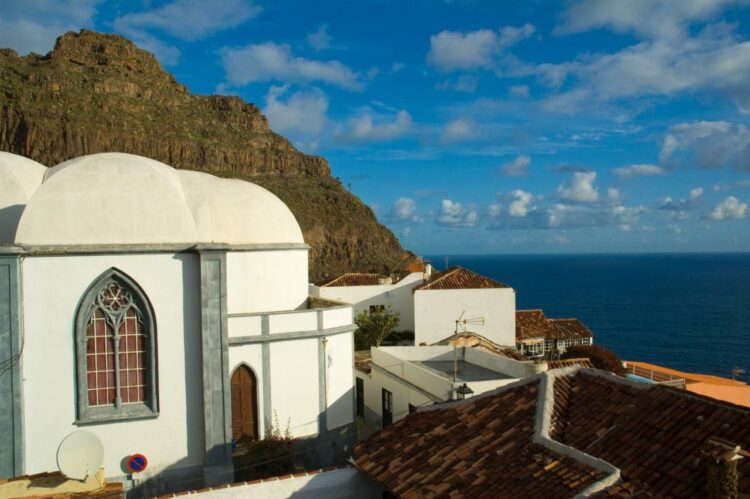
Stay at Casa Rural Los Helechos in Aguelo
Search for other Agulo hotels
Things to do in Vallehermoso La Gomera
While there are older traditional houses to be found in Vallehermoso, the atmosphere is of a working Canarian town, where the locals emerge in the late afternoon for a stroll and chat with their neighbours. Like the rest of La Gomera, there’s not much in the way of ‘sights’ to visit, but if you are looking for things to do we suggest;
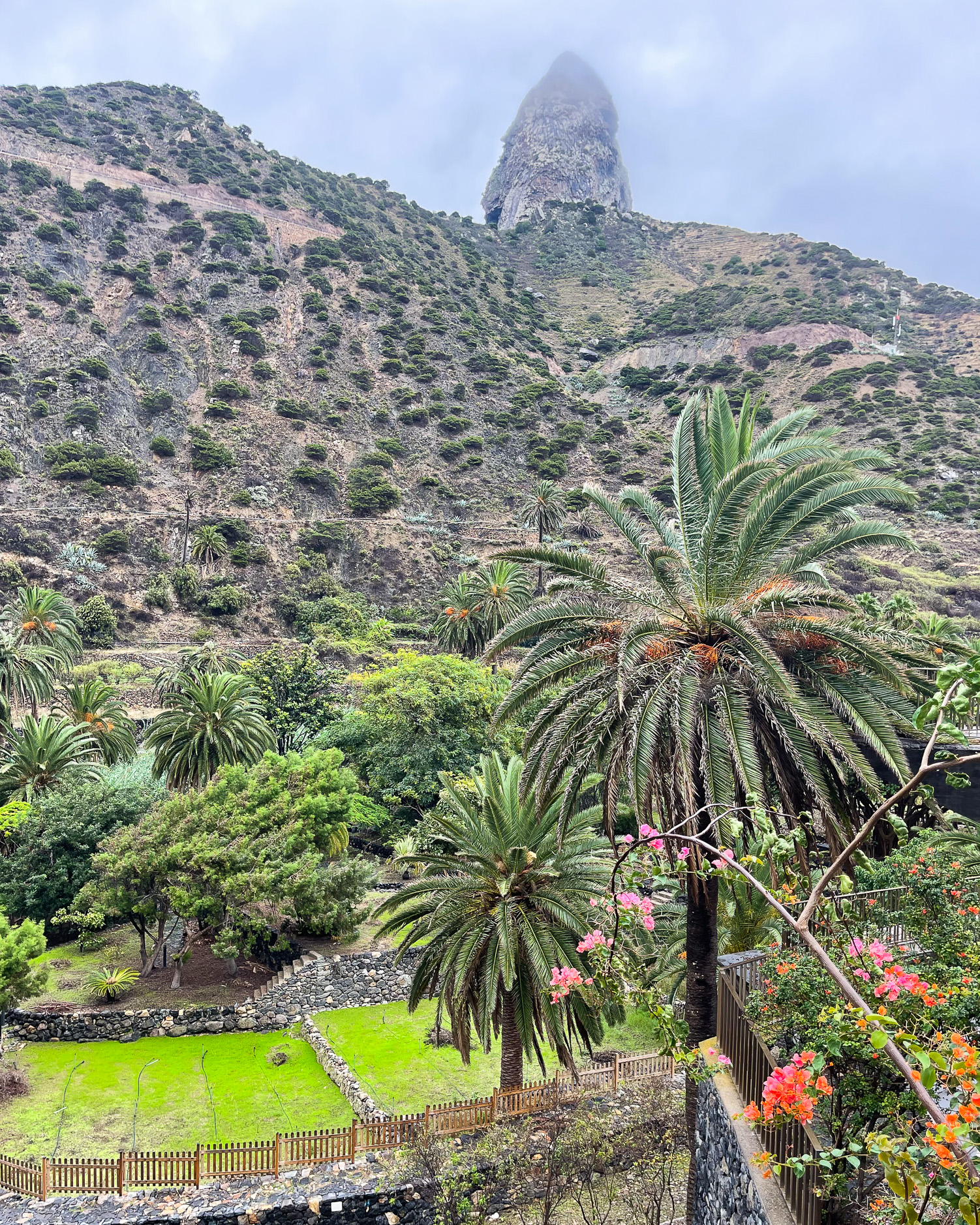
- The Descumbrimiento de Vallehermoso Botanic Garden is on the edge of town, full of palms and native species, with a modern visitor centre. The garden was closed when we passed, the signs proclaiming that a major government funded renovation is underway. However, we heard reports that there is nothing to stop you wandering in through a side entrance to take a look, so may be worth checking out.
- Although the sea at Playa de Vallehermoso is generally too rough for swimming, there’s a seawater swimming pool in front of the beach, with changing rooms and lifeguard, which is free to visit.
Explore Timanfaya National Park and the volcanoes of Lanzarote
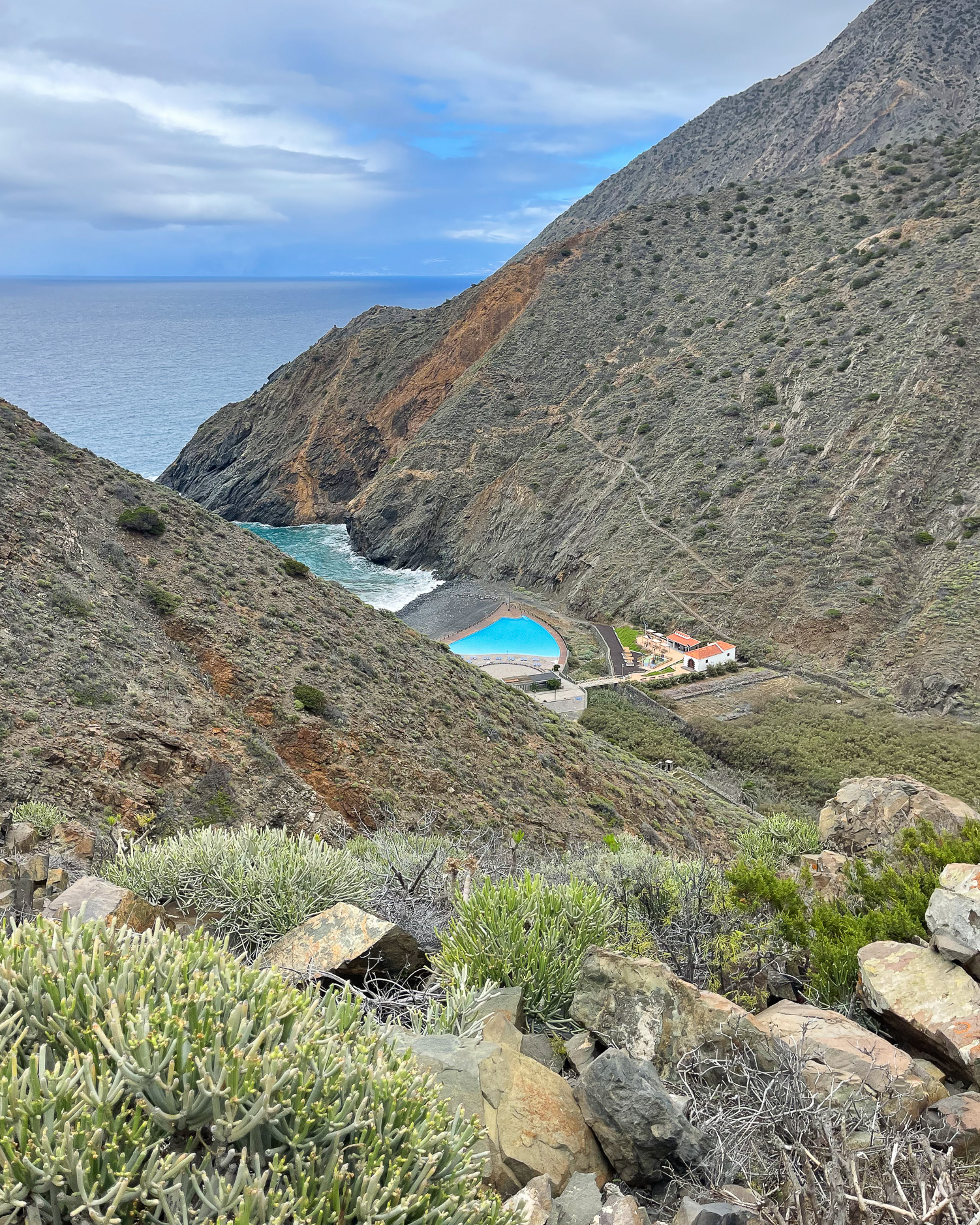
- On the GM-1 road out of town in the direction of Agulo, there’s the Mirador El Almendrillo set beneath Roques de Cano, which gives some excellent views over the town.
- Located at the confluence of several valleys, Vallehermoso offers numerous hiking possibilities, including the walk along the ridge of Cumbre de Chijere which we enjoyed.
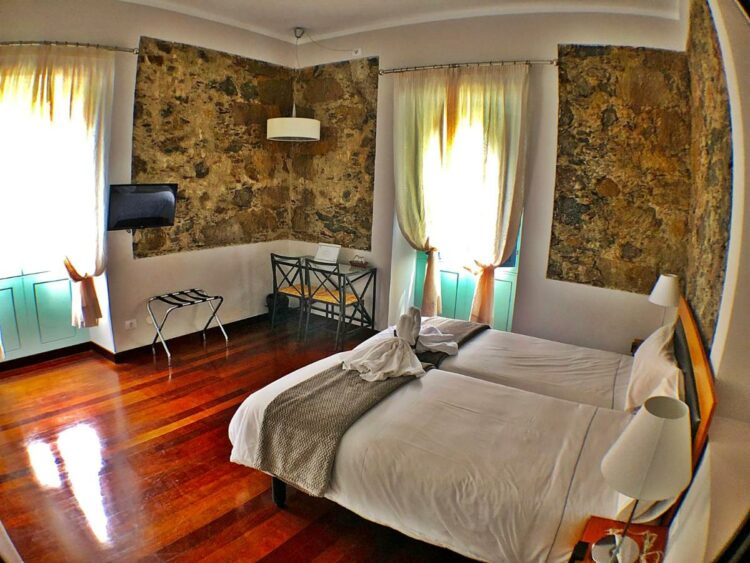
Stay at the contemporary style Hotel Rural Triana in Vallehermoso
Search for other Vallehermoso hotels
Things to do in Valle Gran Rey La Gomera
While it’s mainly a holiday resort, Valle Gran Rey has plenty of walks that start close to the town, but you need a hire car or taxi to get to the starting points. Bus routes do exist but they are limited and didn’t work for our timings. In the resort itself, the main attractions include:
- There are several black sand beaches, with clear water and rock pools for bathing and sunbathing.
- Boat trips run from Valle Gran Rey to spot dolphins and whales, as well as to visit the Los Organos rock formations, looking like organ pipes on the cliffs, that can only be viewed from the sea.
- There are many companies that rent bikes or organise trekking days out, which could be useful if you don’t have your own transport.
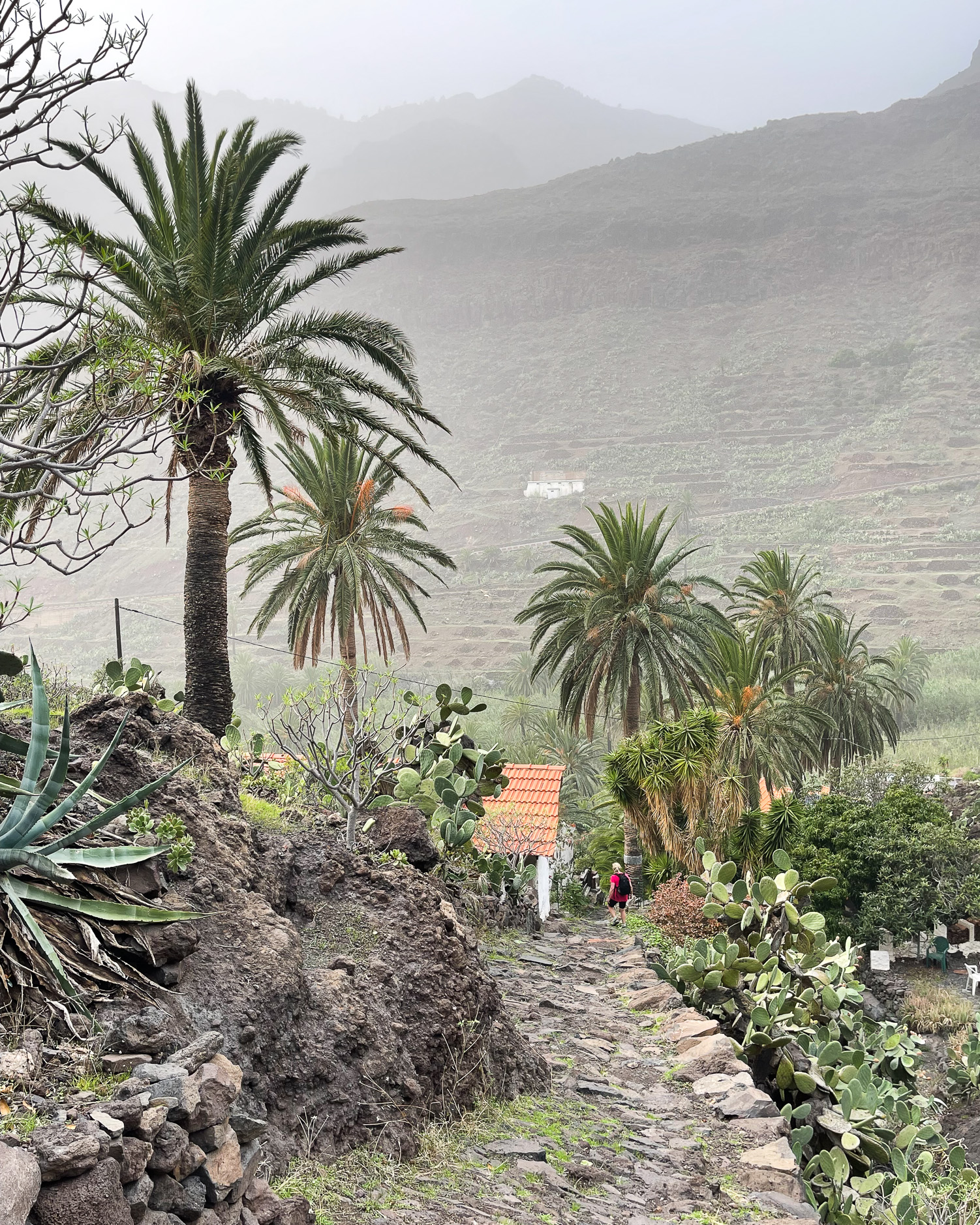
- On the road above the town is the Cesar Manrique designed look out point, which was closed when we passed by, but you can take a look from the outside.
- A craft market takes place on Sundays, selling locally made gifts and souvenirs, which is located next to the bus station.
If you’d like to visit La Gomera for the day from Tenerife, we recommend booking this La Gomera island tour from Tenerife. The ferry crossing from Tenerife is included and you’ll visit some of the main sites of La Gomera in one day.
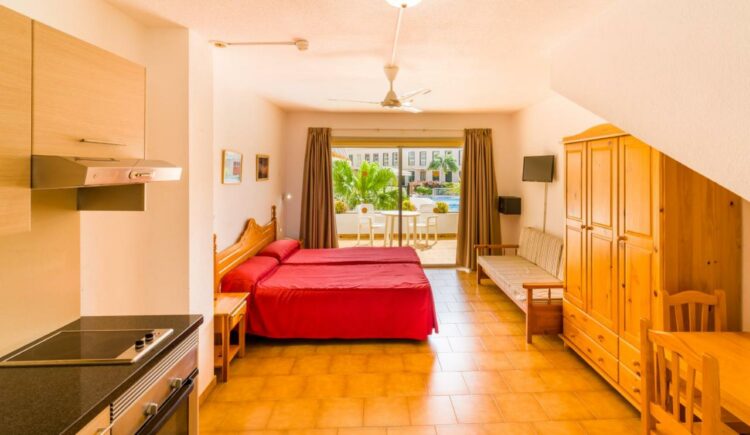
Stay at Apartamentos Charco Del Conde in Valle Gran Rey
Search for other Valle Gran Rey hotels
Garajonay National Park
The park covers much of the central highlands and was established in 1981 to protect the unique Laurel forests, which were declared a UNESCO site of World Cultural Heritage in 1986. A central GM-2 road runs through the National Park making it easy to access the many marked trails, which often have small parking places nearby.
For those with limited time, we recommend this Garajonay National Park ticket and tour. Starting in San Sebastian the 5 hour tour includes a visit to Garajonay National Park as well as stops at the Juego de Bolas Visitor Centre and other viewpoints.
More information about Garajonay La Gomera, a map to download and details of trails can be found on the Garajonay website.
Laguna Grande Visitor Centre – Garajonay National Park
The most popular place to start exploring the Parque Nacional de Garajonay is the Laguna Grande Visitor Centre, in the middle of the park. If you don’t have a hire car, you can use the Line 1 bus from San Sebastian to Valle Gran Rey, or take a taxi to get there.
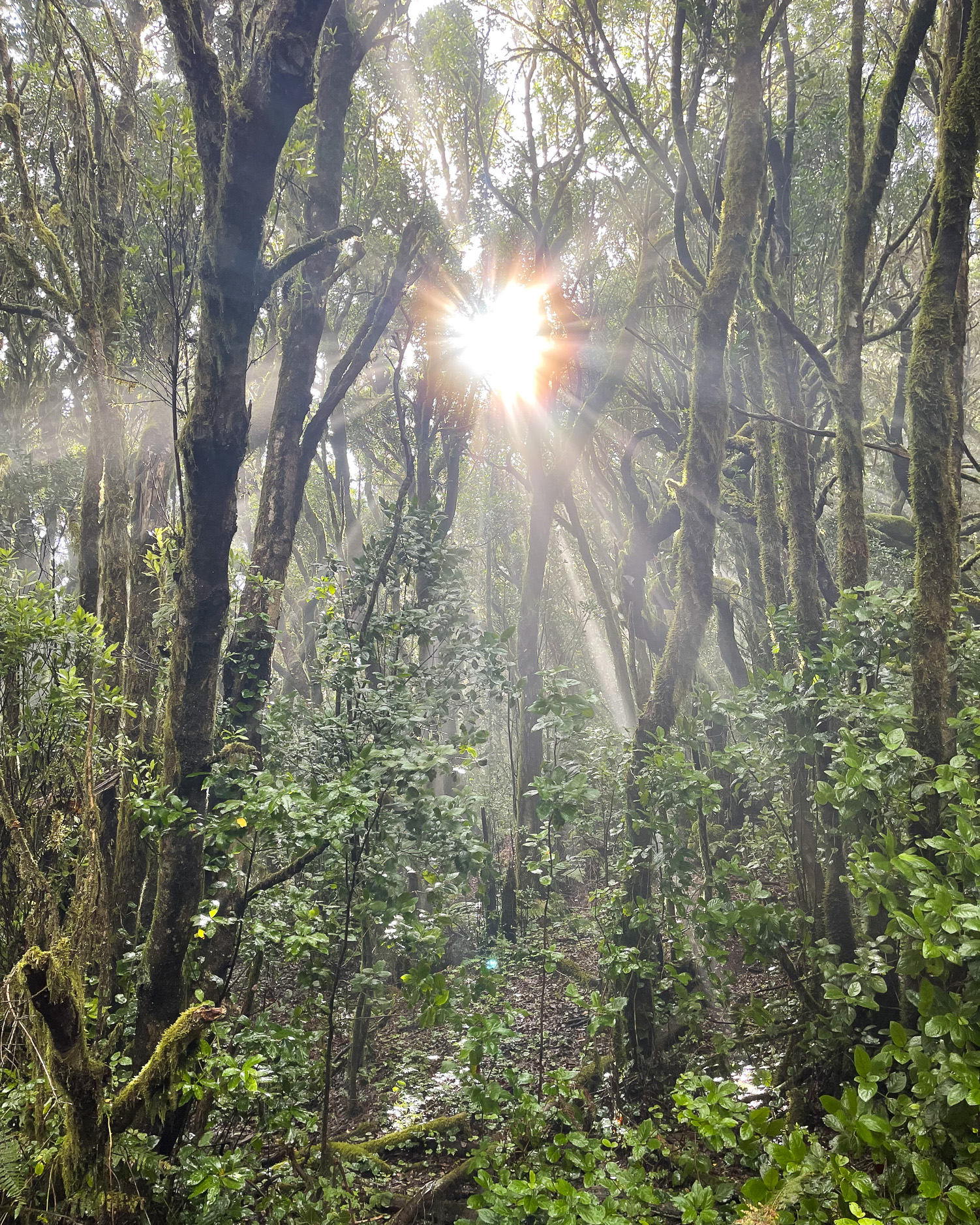
There are a number of facilities at Laguna Grande La Gomera, including a large parking area, recreation ground and children’s playground, cafe, public toilets and visitor information centre. The cafe seemed offers a takeaway service where you order a coffee and drink it standing up, while the adjoining restaurant is for table service at lunchtime.
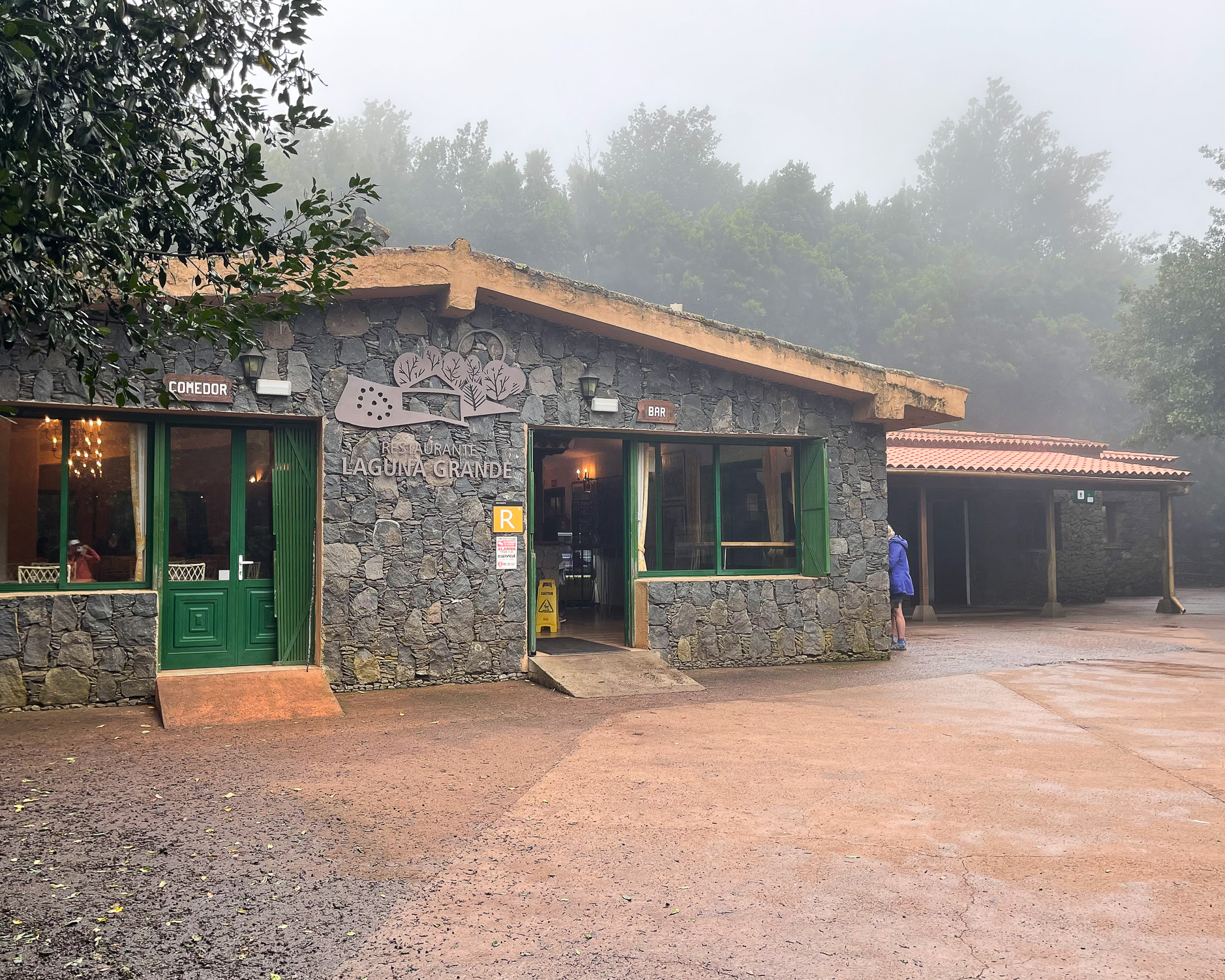
Walking trails in Garajonay national Park
The helpful park wardens in the information centre can advise you on the best trails and provide a map of the walks. You can also download a map and find information about trails from the Garajonay website. We decided to walk the route 6 and route 14 walks, that join together to take you to the peak at Alto de Garajonay.
As is typical, low cloud was hanging over the park when we visited, so many of the fine views were shrouded in mist. The park is at 1500 m altitude and is generally a few degrees colder than the coast, so come prepared with a fleece or jacket to cover up when you visit.
For more information about the best hiking routes in la Gomera and the 7 day itinerary that we followed, check out my article Hiking in La Gomera – a 7 day itinerary
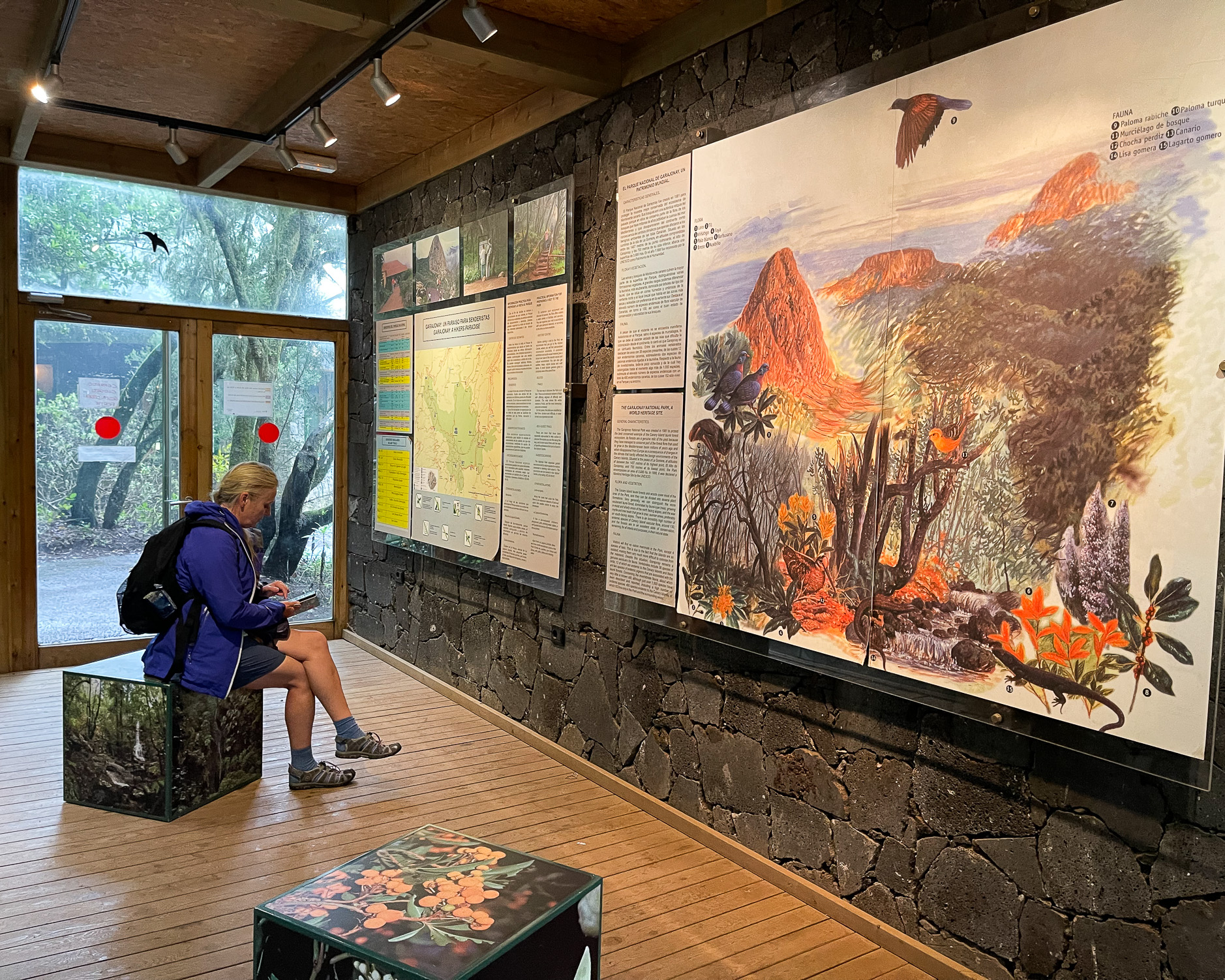
Juego de Bolas Visitor Centre
The Juego de Bolas La Gomera is located just outside the national park, close to Agulo and Hermigua. With a museum, botanical garden, craft shops and information centre, visiting Juego de Bolas is one of the top things to do in La Gomera. Native shrubs and trees surround the centre, with beds designed to demonstrate the range of medicinal plants used on La Gomera.
For those with limited time, we recommend this Garajonay National Park ticket and tour. Starting in San Sebastian the 5 hour tour includes a visit to Garajonay National Park as well as stops at the Juego de Bolas Visitor Centre and other viewpoints.
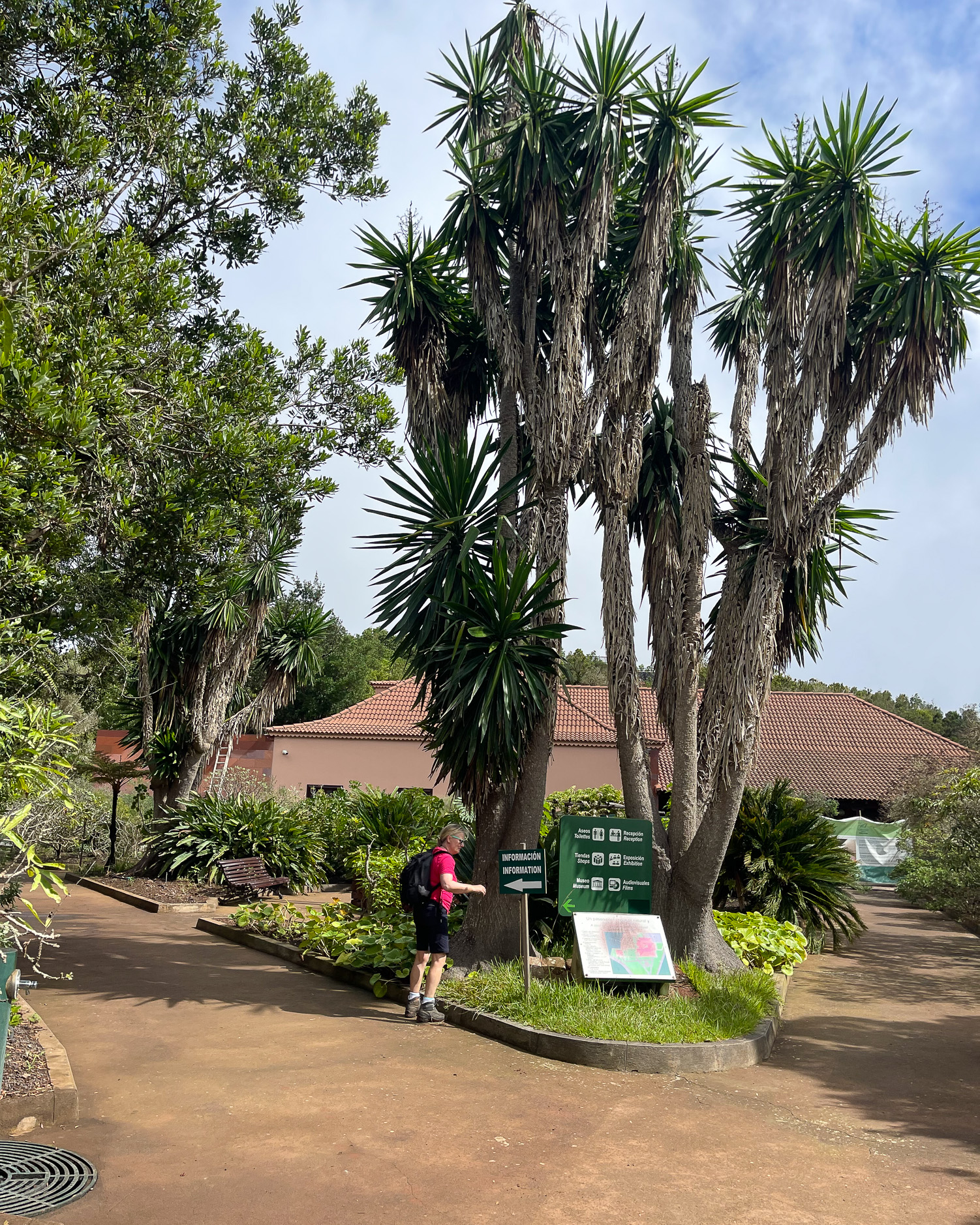
Casa de la Memoria ethnographic museum
The Casa de la Memoria or “House of Memories” is an ethnographic museum that offers a fascinating insight on the cultural heritage of la Gomera. Through the video and exhibitions we learned about the Silbo whistling language, that was used to communicate across deep ravines.
Life in the past was hard on La Gomera, with families using the island’s resources to keep goats, farm a few crops on the terraced valley sides and tap the sap of palm trees to make palm honey.
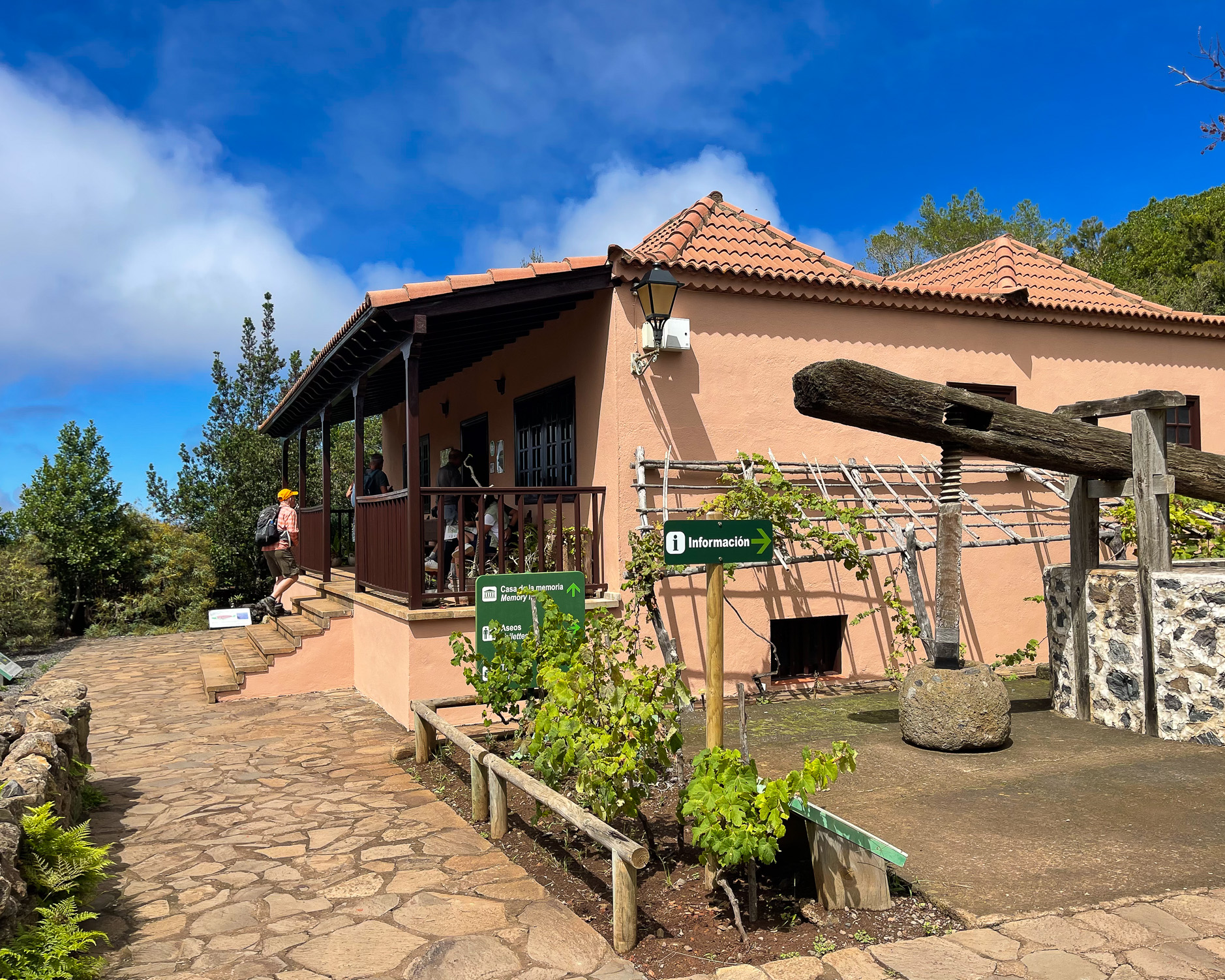
Adjoining the “House of Memories” is a series of small shops and exhibitions around the courtyard. The information centre is manned by park wardens who offer valuable information on walking trails and can give you a map of the Garajonay National Park.
In the same area is a cafe selling coffee and snacks as well as local food specialties and a souvenir shop. An exhibition explains about the terrible forest fires of 2012 that destroyed large areas of the Garajonay forest reserve.
Read about 30 amazing things to do in Lanzarote
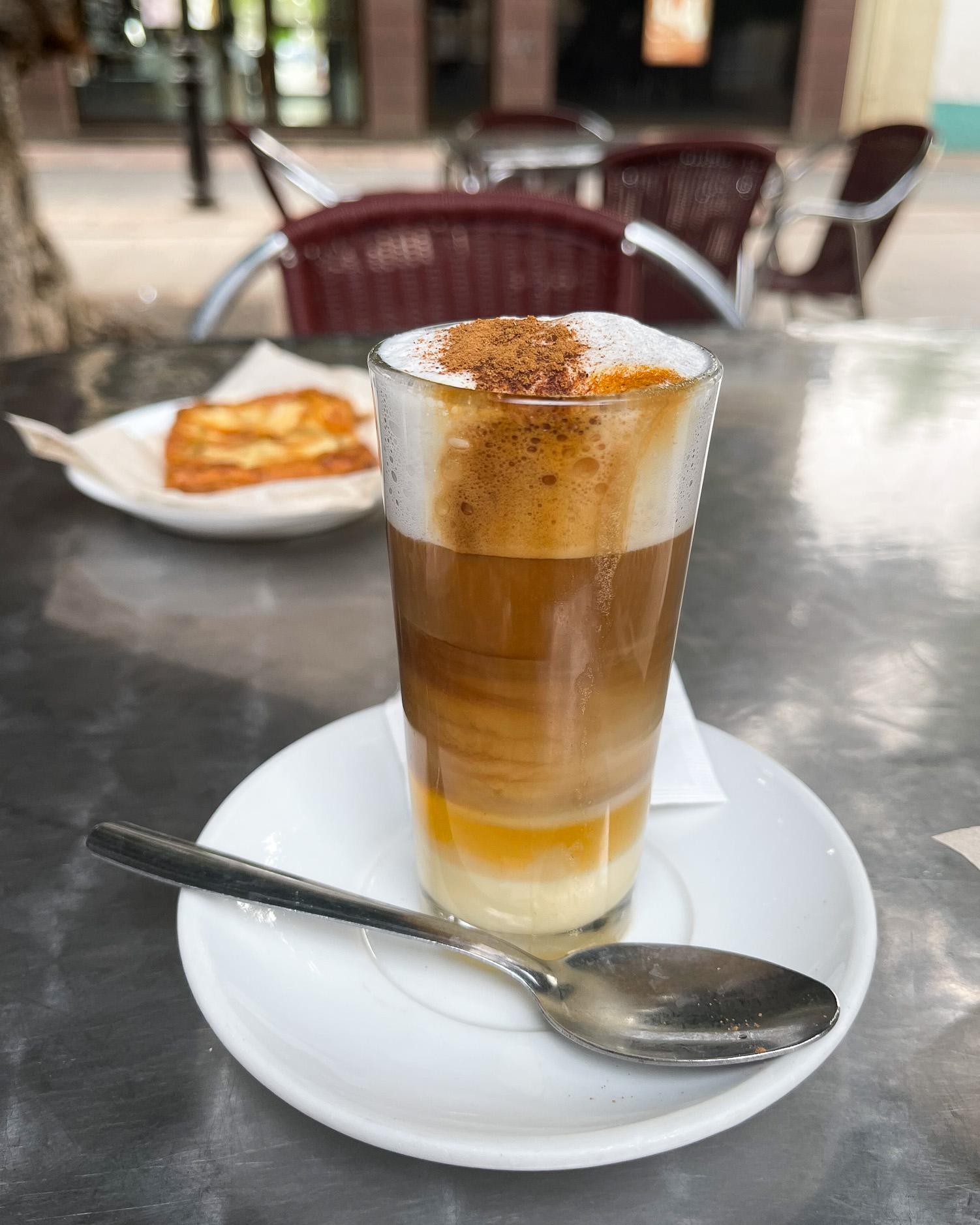
Tours in La Gomera
If you want to visit La Gomera for the day from Tenerife or take a guided walk, we recommend these tours
La Gomera island tour from Tenerife – This day tour includes the ferry crossing from Tenerife and will give you a good overview of La Gomera in one day.
Garajonay National Park ticket and tour – Starting in San Sebastian the 5 hour tour includes a visit to Garajonay National Park as well as stops at other notable sites and viewpoints.
Hamlets of the north hiking tour – For those who want to hike in la Gomera, this tour starting in San Sebastian includes transport and takes you on a day’s guided walk through the picturesque northern valleys.
Food in La Gomera
While restaurants serve dishes that are influenced by both Canarian and Spanish culture, there are some things that are real specialties of La Gomera. Look out for:
Palm Honey – a sweet syrup collected by tapping the sap (guarapo) of the palm tree, which is then boiled to purify and concentrate the syrup. The palm honey is often served drizzled over grilled local cheese, while the Guarapo can be used as a natural energy drink.
Honey – produced by traditional beekeepers in the mountain villages.
La Mistela – a sweet liqueur made by macerating white wine with orange peel and spices, fortified with brandy.
Dolces or sweet biscuits – small biscuits made in different styles and shapes for festivals throughout the year. Local products such as palm honey, bee honey, almonds and curd cheese are often used in the cakes and biscuits.
La Gomeran Cheese – the island’s cheese is made from goat or sheep milk, and is served while still fresh or matured to make a ‘cured’ cheese with more intense flavour. Sometimes the cheese is smoked over local briarwood or mulberry wood.
Almagrote – local cheese is blended with tomato, pepper and spices to make a dip that is served with bread as a snack or starter.
Other Canarian specialties such as Gofio (a toasted flour of corn, wheat or barley) and Mojo (spicy sauce served with meat or fish) are also popular in La Gomera. Typical Spanish dishes such as tapas or seafood platters are also widely available.
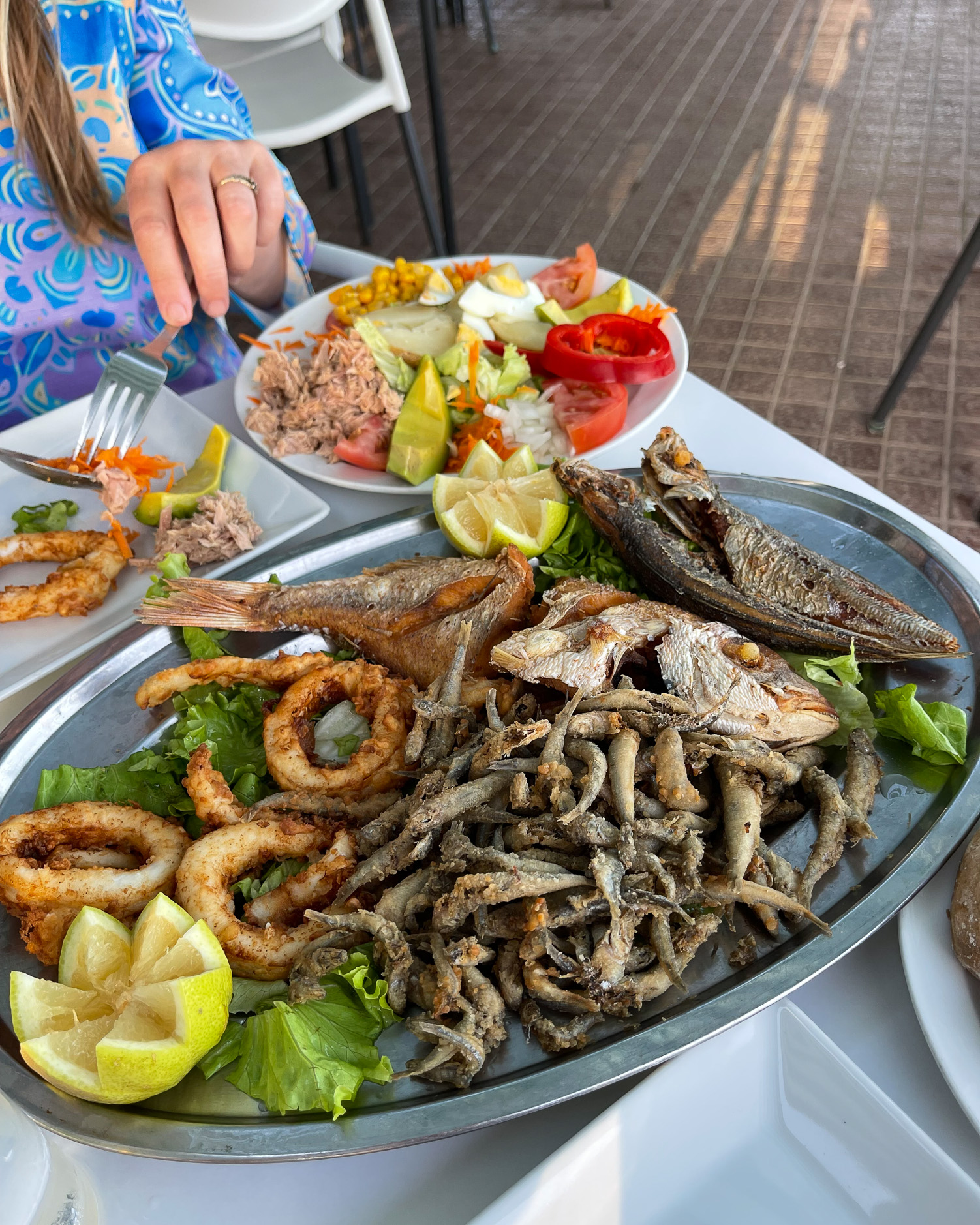
Where to stay in la Gomera
We stayed at the Parador de la Gomera in the island capital of San Sebastián de La Gomera. The Parador is a historic building that’s been converted into a hotel, with shady courtyards, gardens and ocean views. It’s one of the best hotels in La Gomera to relax for the beginning or end of your holiday.

Stay at the historic Parador de La Gomera in San Sebastián
Search for other San Sebastián de La Gomera hotels
Among the La Gomera hotels that offer a luxurious, resort style experience, Hotel Jardin Tecina in Playa de Santiago is a great place to unwind. Rooms overlook the ocean, surrounded by lush gardens at Playa de Santiago on the sunny south coast of La Gomera.

Stay at the luxurious Hotel Jardin Tecina in Playa de Santiago La Gomera
Search for other San Sebastián de La Gomera hotels
In Agulo we stayed at the welcoming guest house Casa Rural Los Helechos, which is ideal for walkers. Rooms are set around a small courtyard and have kitchenette facilities. The owners are very helpful and can give advice on local walking trails.

Stay at the welcoming guest house Casa Rural Los Helechos in Aguelo
Search for other Agulo hotels
We thought that Hotel Rural Triana was easily the nicest place to stay in Vallehermoso. This small hotel is contemporary in design, with spacious rooms arranged around a large courtyard, where you could sit out in fine weather. The excellent breakfast was included with the price of our room.

Stay at contemporary style Hotel Rural Triana in Vallehermoso
Search for other Vallehermoso hotels
As the island’s main holiday resort, Valle Gran Rey offers a wide range of hotels and self catering apartments. The issue we found for walkers was that not all would accept a shorter booking of 1-2 nights.
We stayed at Apartmentos Charco Del Conde, a well run apartment complex that offered good value in an excellent location on the seafront. Although the room decor was a bit dated, it was fine for a 1 night stay and we had a kitchenette to make breakfast.

Stay at the comfortable Apartamentos Charco Del Conde in Valle Gran Rey
Search for other Valle Gran Rey hotels
How to get to La Gomera
Most people will arrive in La Gomera via the neighbouring island of Tenerife, where there are numerous international flights into Tenerife South airport. From here it’s a 30 minute taxi or bus journey to get to the port at Los Christianos, where you can get the ferry to La Gomera (it’s so close you can see it). Two different ferry lines – Fred Olsen and Naviera Armas each run around 3 ferries a day to and from La Gomera.
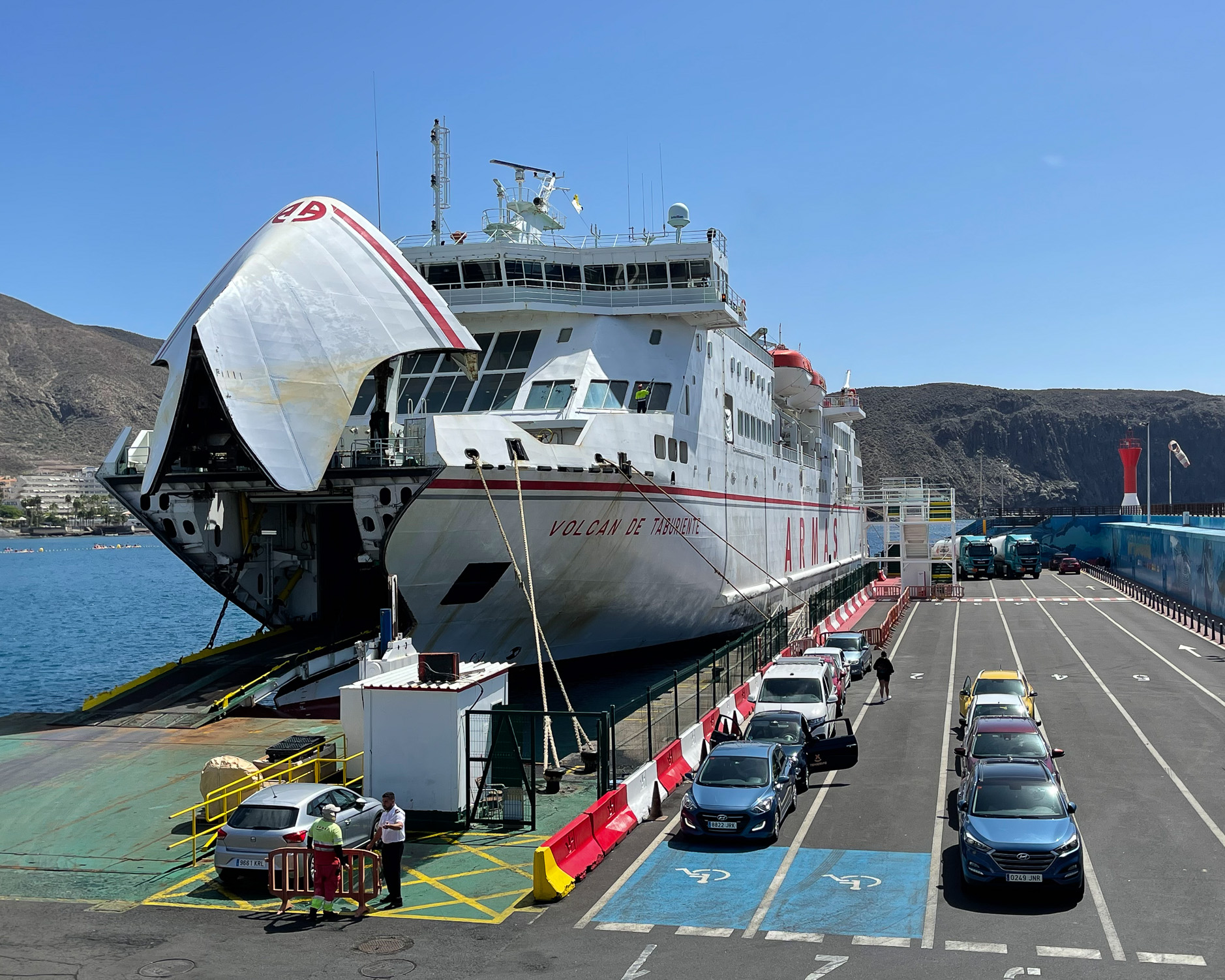
Taking the ferry – Tenerife to La Gomera
We took an early flight from the UK to Tenerife, arriving around 11.30am. Arriving at Tenerife South airport in the morning is ideal, as it means you can easily get the ferry to La Gomera on the same day. We took one of the frequent buses from Tenerife South Airport and got off in Los Christianos 30 minutes later. From the bus stop it was a 15-20 mins walk to the ferry port.
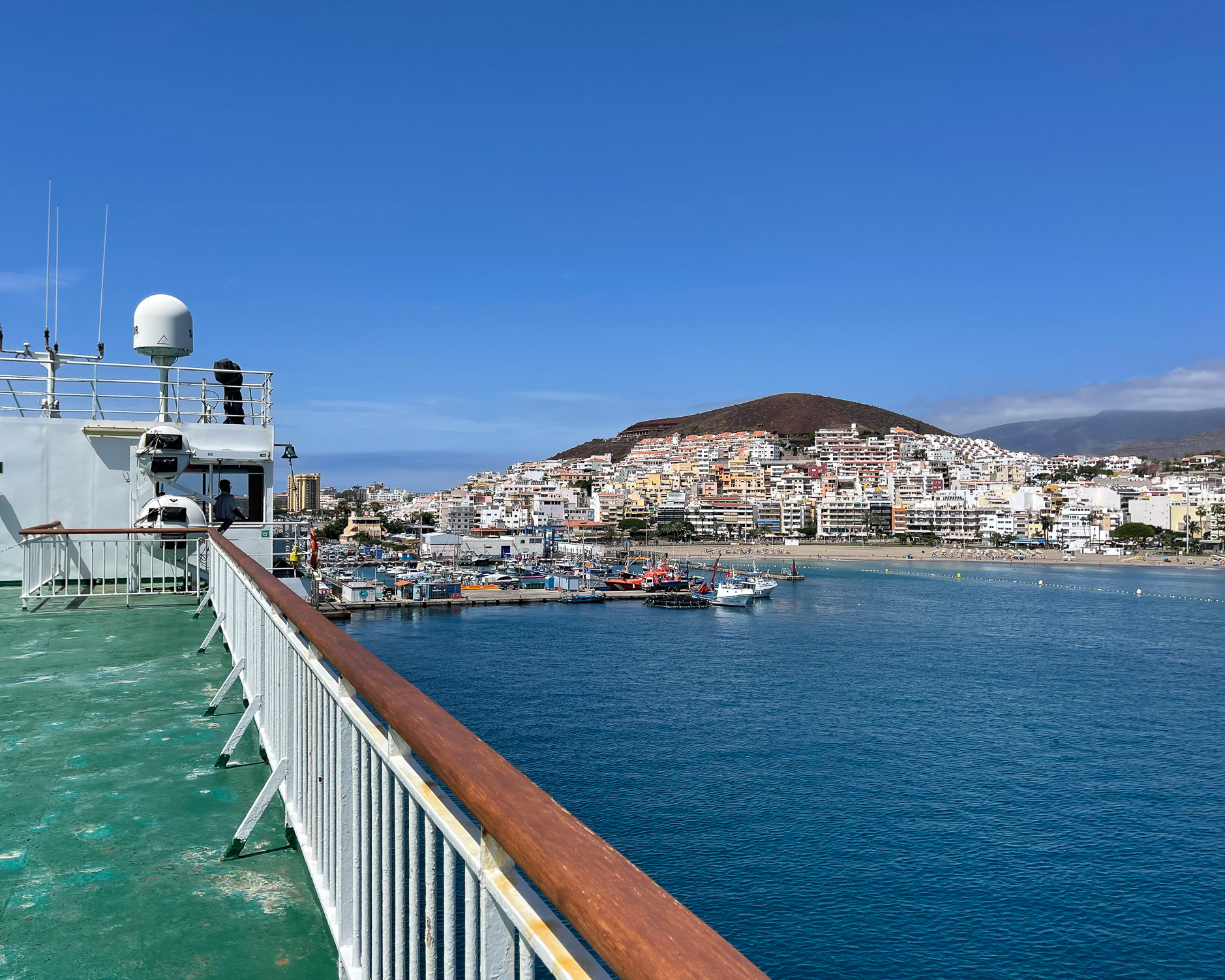
As we had a couple of hours to wait until our ferry, we relaxed in the sunshine at the cafe “El Teatro del Puerto” which sells reasonably priced refreshments. For foot passengers there’s no need to book in advance as it’s easy to buy tickets in the port’s departure centre, where the ticket counters open around 1 hr before the ferry leaves.
Once on board, there was plenty of space to sit inside or outside on the ferry. As the ferry pulled away we enjoyed the views looking back on the south coast of Tenerife and the arrival at the island capital of San Sebastian de la Gomera.
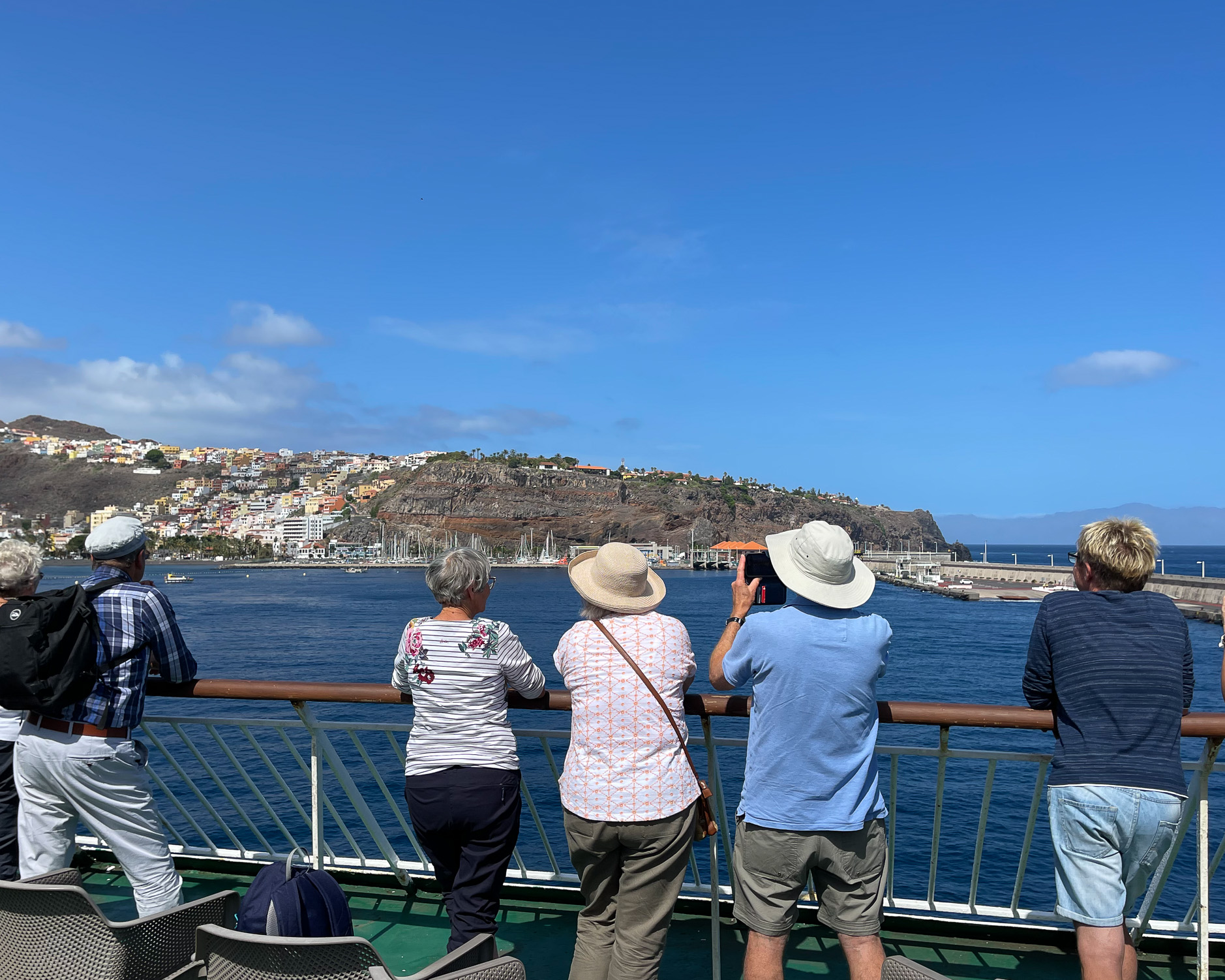
Ferry lines to La Gomera
There are two ferry lines that make regular crossings from Tenerife to La Gomera and you can find details of crossings on the Fred Olsen website and the Naviera Armas website. Each of the ferry companies operates around 3 crossings per day in each direction and cost is around €45 one way, with reductions for over 60s.
Fred Olsen also run the ferry along the coast of La Gomera from San Sebastian to Playa de Santiago and Valle Gran Rey.
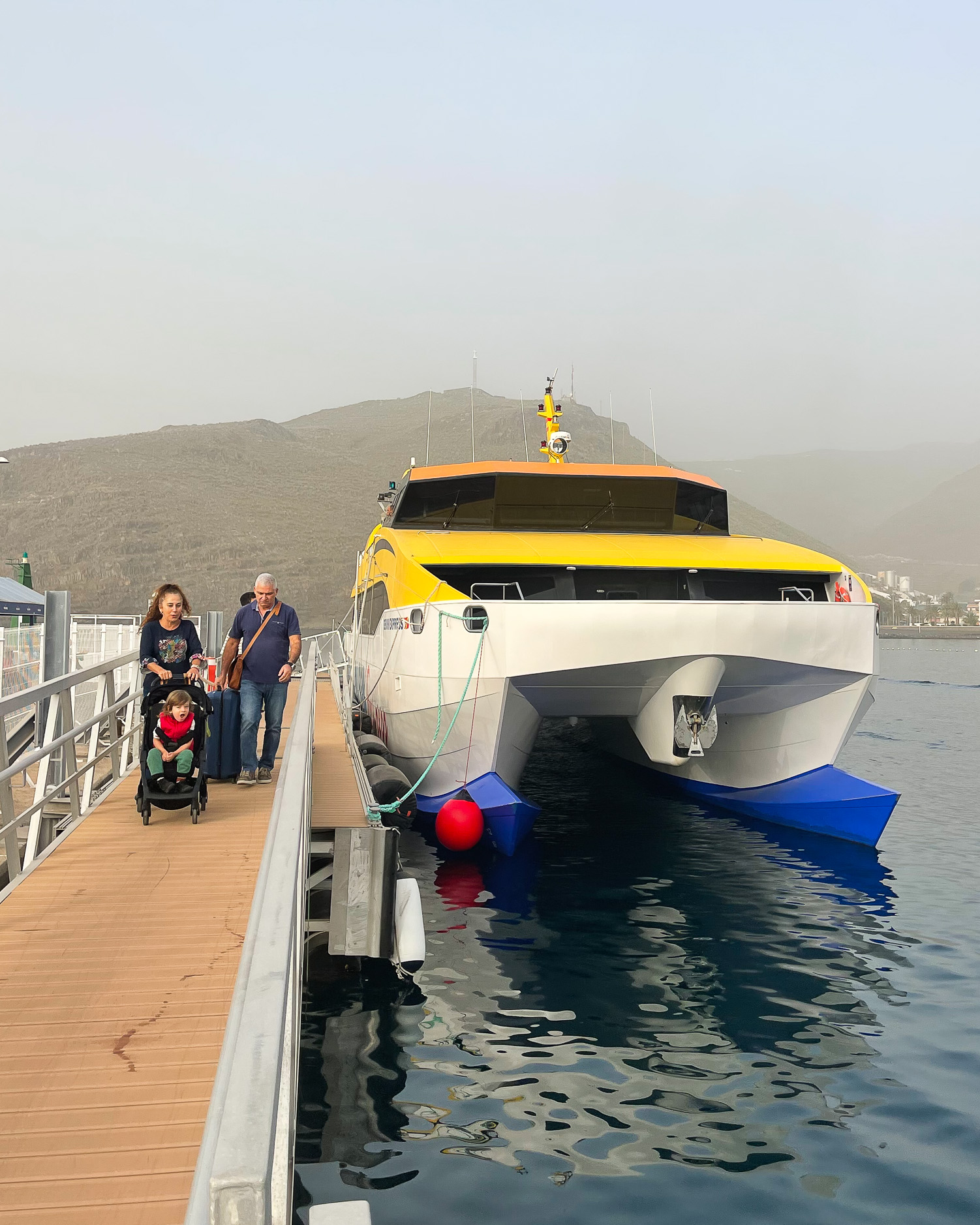
Getting around La Gomera
While there are regular buses to take you around La Gomera, these tend to run only a few times per day, or may not take you on the exact route that you need. On our trip we mixed buses in la Gomera with taxis, which is a good option for walkers.
Because the public transport can be a bit patchy, car hire in la Gomera is a popular option. The best place to do this is the island capital of San Sebastian if arriving by ferry or the popular resorts of Valle Gran Rey and Playa Santiago.
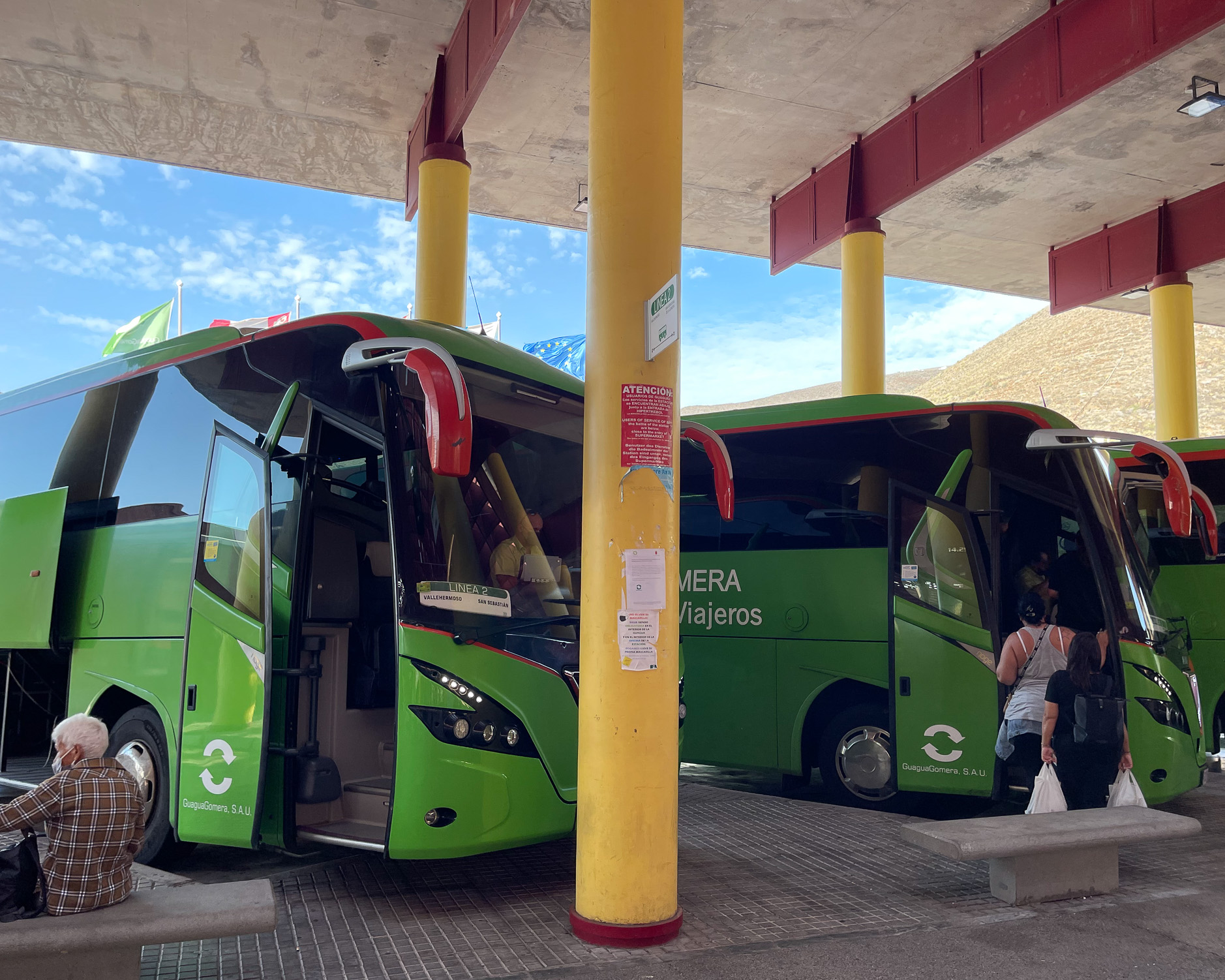
Bus in La Gomera
The buses in the Canary Islands are known as Guagua, and the local bus company on la Gomera is Guagua Gomera. You can check their website for routes and timetables. Most journeys cost €2-4 and both cash and debit cards were accepted on board, where you pay the driver directly.
The bus company operates both full scale buses and minibuses, depending on the route. Journeys can sometimes be quite scary on the hairpin bends, even though the drivers are very skilled and careful. Be sure to check timetables carefully before relying on a bus, as they may vary especially at weekends and feast days.
Note that timetables only show the time the bus will leave its starting point, so if picking it up en route, you’ll have to use a mapping tool to guess the rough time it will be passing your stop. Detailed information for La Gomera bus routes can be found below.
- Line 1 – Valle Gran Rey – San Sebastian de La Gomera
- Line 2 – Vallehermoso – San Sebastian
- Line 3 – Alajero – San Sebastian
- Line 4 – Vallehermoso – La Dama
- Line 5 – Vallehermoso – Alojera
- Line 6 – Valle Gran Rey – Airport
- Line 7 – San Sebastian – Airport
- Line 8 – Vallehermoso – Valle Gran Rey
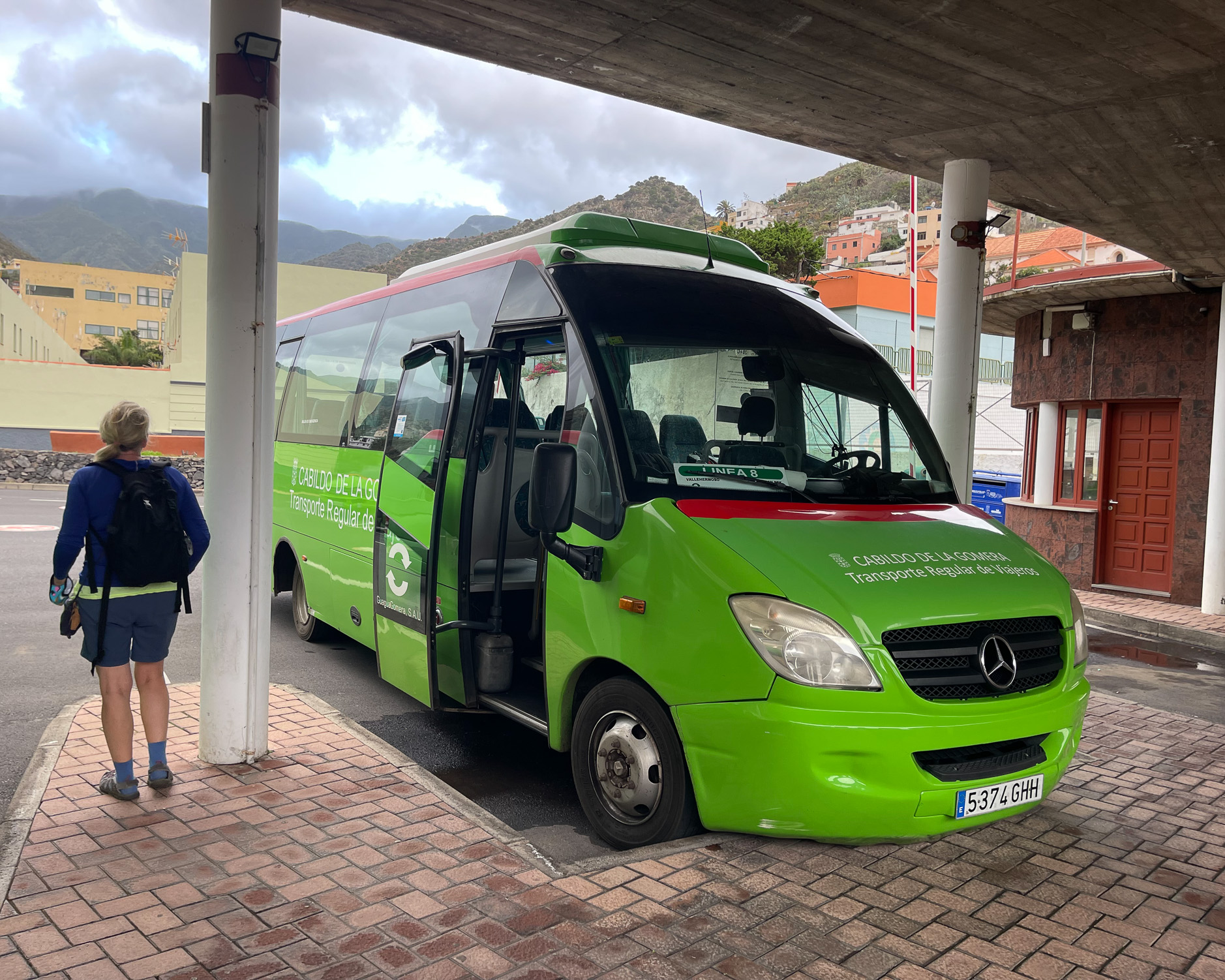
Taxi in la Gomera
We used a combination of bus and taxi on our trip. While the taxi costs were quite high (€20-30) due to the distances, it was overall cheaper and more environmentally friendly than renting a car. There is no central number to call a taxi, and drivers tend to operate independently.
So before you head out for the day, be sure to ask your accommodation for the numbers of a few taxi drivers that are local to where you are going. The drivers may not speak English but often use Whatsapp to communicate with tourists. So you can send them a message in English or Spanish (using a translation app) to request a pickup and in our experience we would usually get a prompt reply.
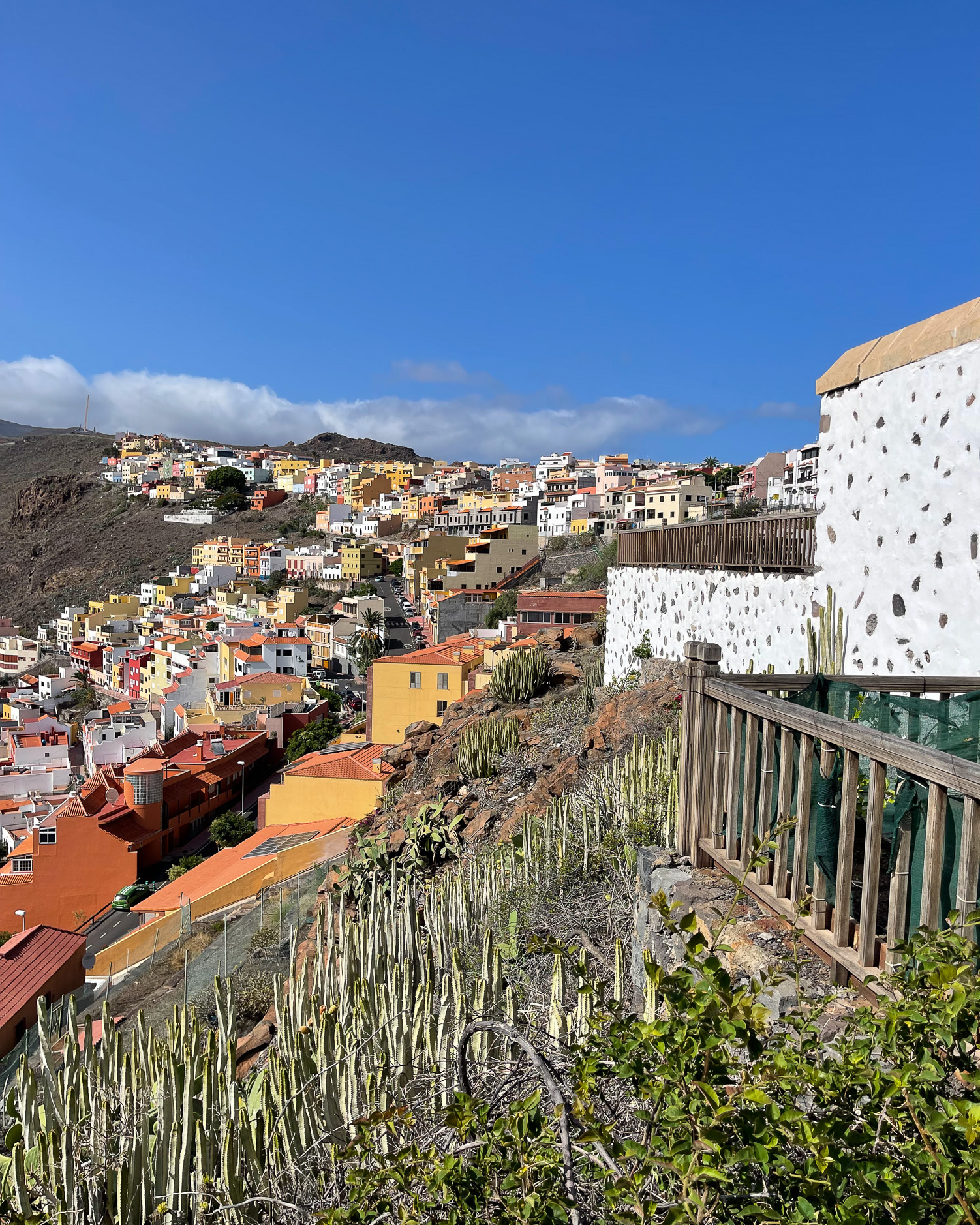
Car Rental in la Gomera
If you want to get the most out of a short trip, you could consider renting a car. Most hikes are circular, and this will enable you to reach the route starting points with minimum delay. If you want to rent a car in La Gomera check with locally based Cicar car hire company have an office at the San Sebastian port, or compare car rental deals.
La Gomera Weather
Located in the Atlantic, off the coast of North Africa, the weather in La Gomera is temperate year round. In the winter months of December to February you can expect warm days and highs of 20 degrees C, rising to 26 degrees C in the summer months of June to August.
In winter, night time temperatures drop to around 14 degrees C so you will need a jumper or light jacket. We visited in November and spent most of our time in t-shirts during the daytime. We found the temperature very pleasant and not too hot for hiking.
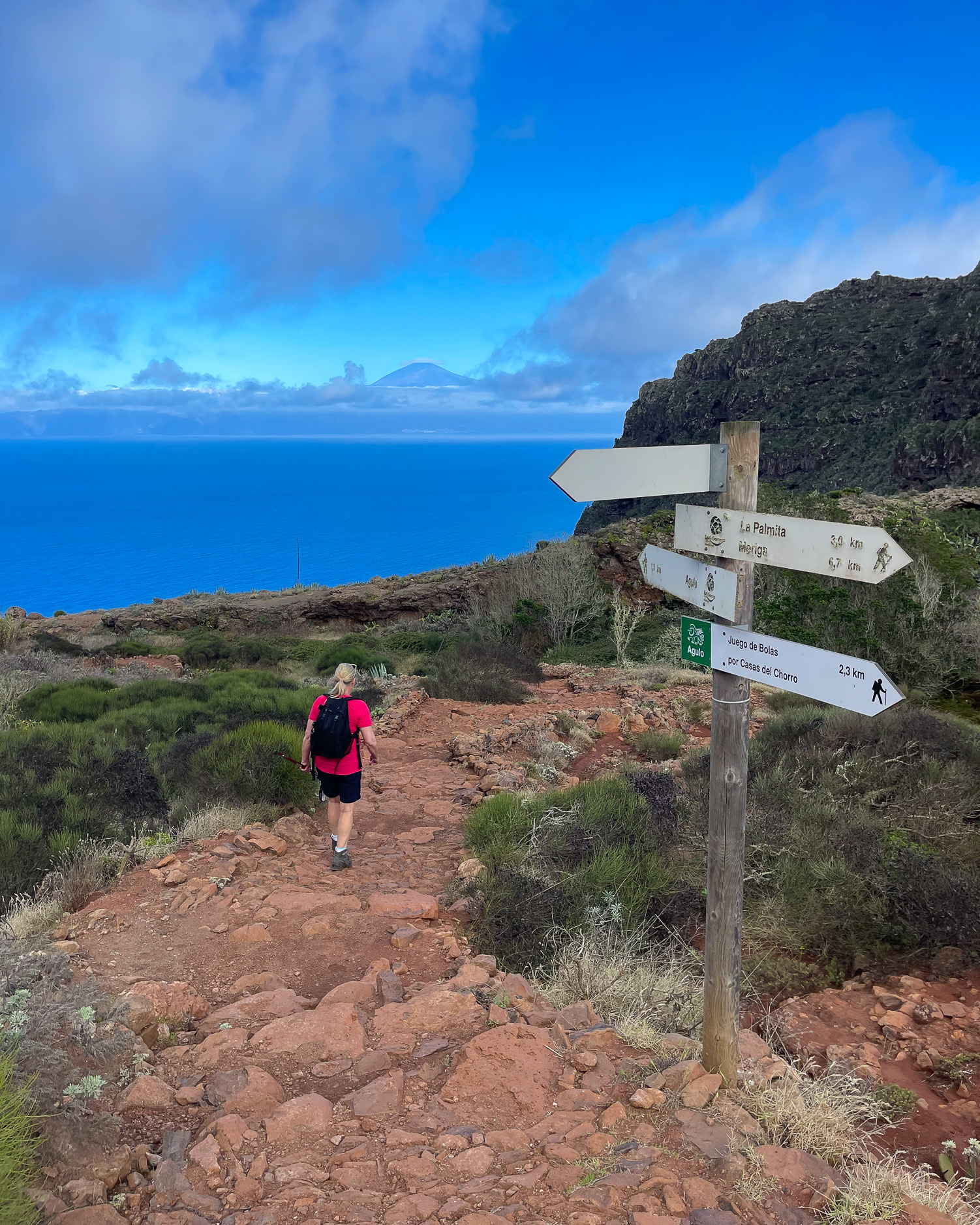
On some of the higher walks and in the Garonjay National Park, the temperature dropped a few degrees compared to the coast, so we did need an extra layer at times. Rainfall is highest through the winter months and we experienced light showers on some of the days.
We also experienced the Calima, a mist caused by dust from the Sahara, that causes a haze to fall over parts of the island, although the air was still warm. In the Garajonay National Park, the slightly higher altitude and high levels of moisture also create a mist or cloud cover, which can be atmospheric, but hides some of the views over the island.
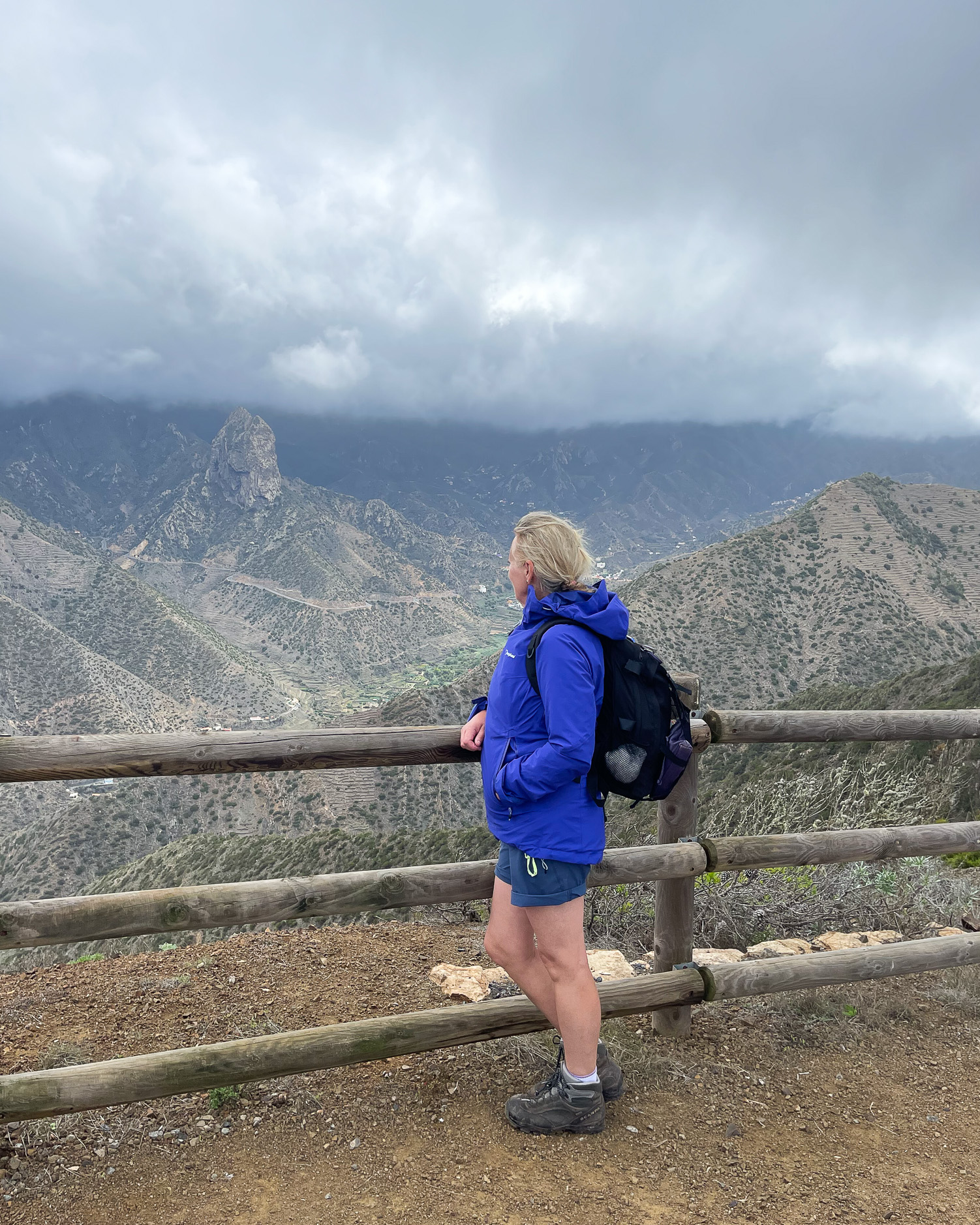
What languages are spoken in la Gomera?
As an independently governed territory of Spanish, the language of the Canary islands is Spanish. On the surface, the atmosphere feels very Spanish, but you only need to scratch below the surface to realise that the Canaries have their own culture, history and traditions. Each island within the Canaries also has different cultural heritage that stems from their landscape and history.
La Gomera is an island that for decades has been popular with German visitors, who enjoy the quiet atmosphere and wild beauty. In particular Valle Gran Rey was a hotspot for German hippies of the 1960s, so you’ll often find German spoken on the island by those who work in tourism.
We had no problem getting by with a smattering of Spanish and some English, finding that those working in tourist information centres would speak English. Locals in restaurants and hotels often spoke a little English, so we could get by comfortably. However, don’t expect everyone you meet to speak fluent English, so regard your visit to La Gomera as a chance to learn some Spanish phrases!
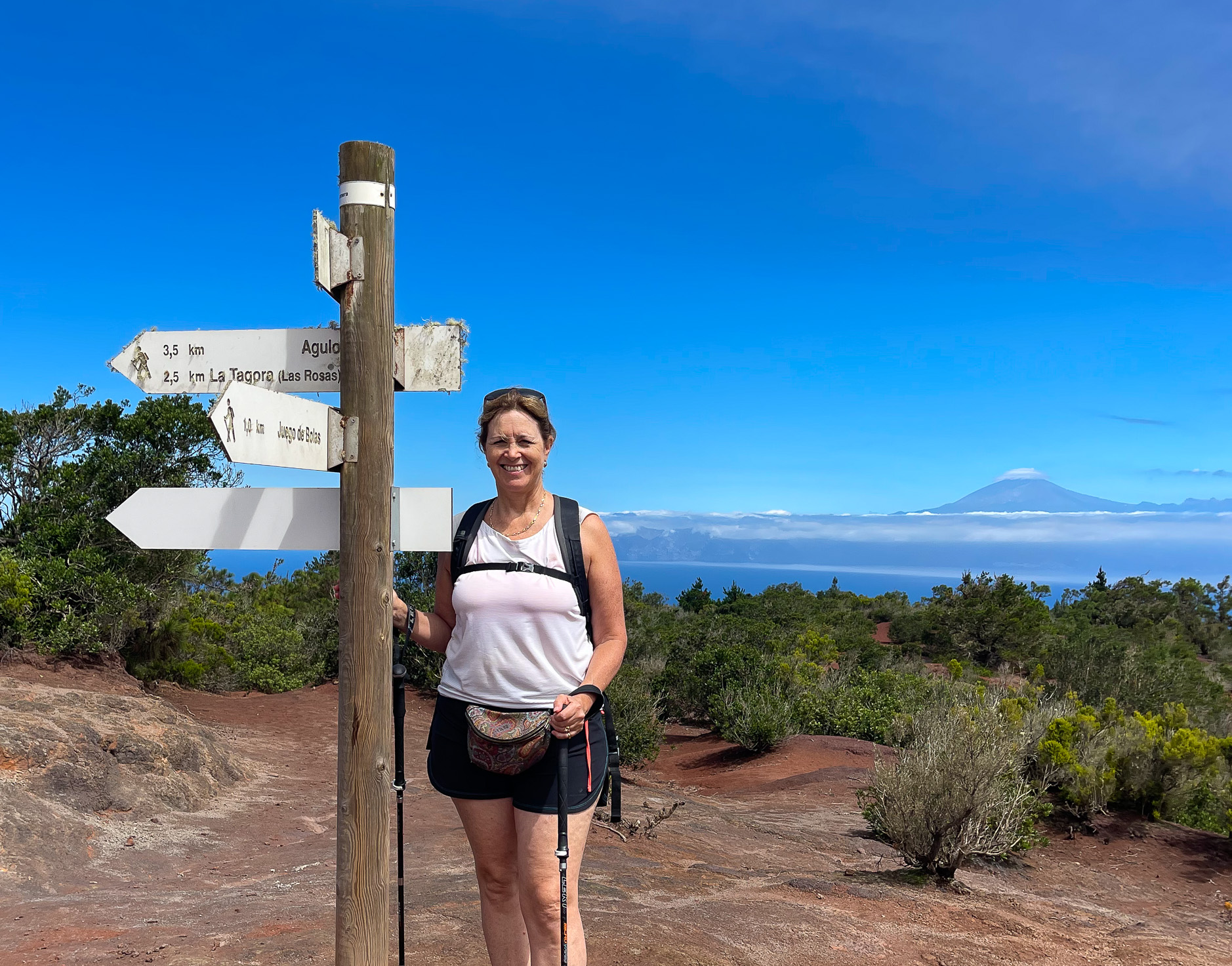
Money in la Gomera
Like Spain, the currency of the Canary Islands is the Euro. We found that on La Gomera, both cash and debit cards were widely accepted in bars, hotels, restaurants and shops. Occasionally a small hotel would request payment in cash.
We used debit cards to pay for most things, with cash for smaller items and tips. Debit cards are accepted on most buses, even for fares of a few Euros. Credit cards are accepted for bigger items such as hotel bills.
ATMs are available to withdraw cash in Euros at all the main centres, such as Agulo, Vallehermoso, San Sebastian and Valle Gran Rey. There was often a flat fee at ATMs for cash withdrawal, of between €4-6 so we would sometimes check the fees at different ATMs where there was a choice.
To avoid fees when paying by card in Euros, I use a charge card such as Revolut or Monzo when travelling. These cards allow you to use an app to add money onto your card, then move it between currencies and use it to pay for things without exchange fees.
In Spain and the Canary Islands, the culture of tipping is not as strong as in the USA or even England. It’s not expected to tip in taxis or bars. When we left a couple of Euros or a tip of 5-10% in a restaurant, or rounded up a taxi fare, it seemed to be appreciated.
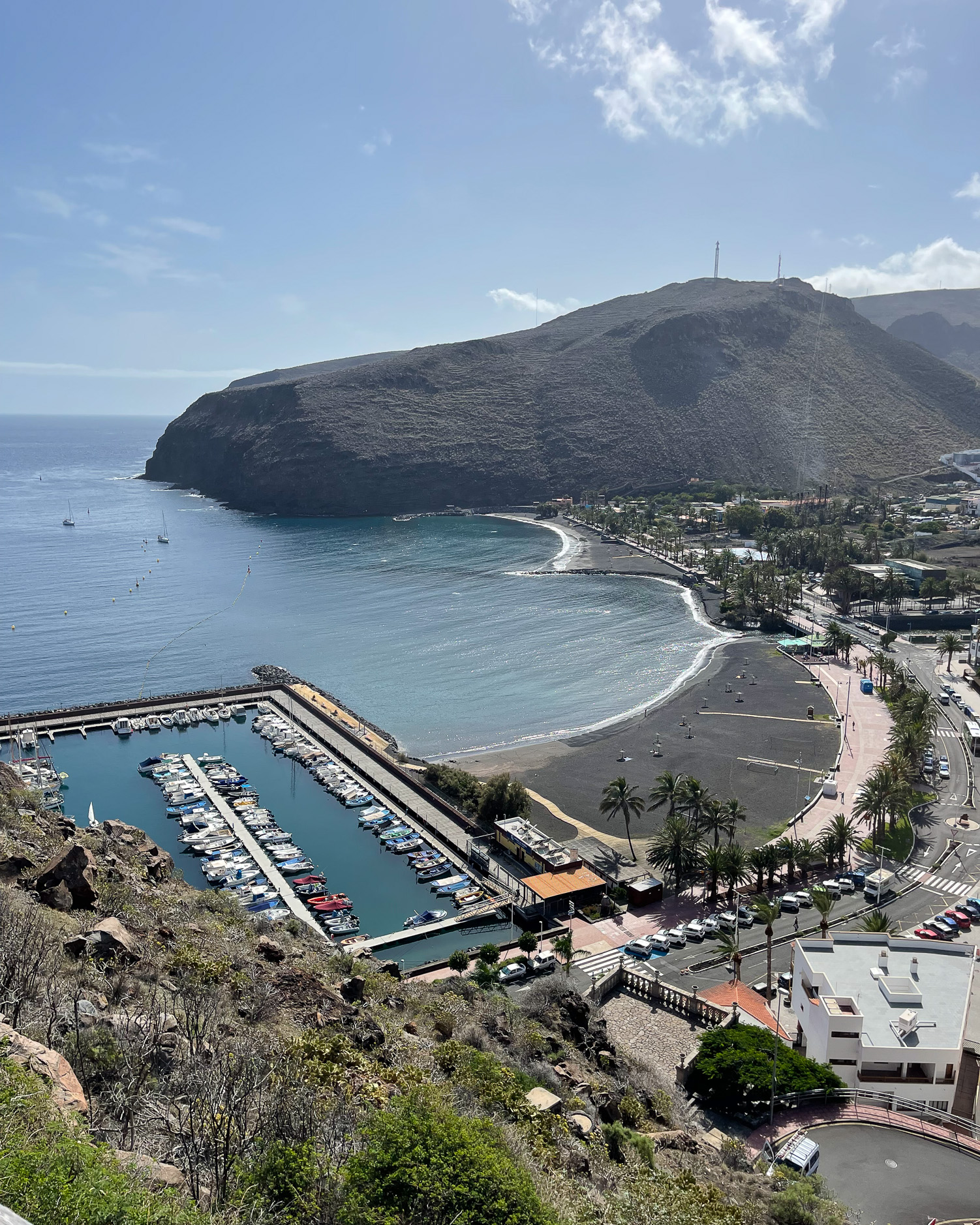
More information to plan your trip
You can find further information to plan your trip on the La Gomera Tourism website and on the Canary Islands Tourism website.
More information about Garajonay National Park, a map to download and details of trails can be found on the Garajonay website.
Read Next
Plan your hiking trip to La Gomera with my 7-day itinerary
Pin it
This article is originally published at Heatheronhertravels.com

